Making Group Contracts
Working in groups can be both rewarding and challenging. When students write down and agree upon ground rules, expectations, roles, and responsibilities in the form of a contract or project charter, they can help keep one another on track and accountable. This teaching tip discusses four steps instructors can take to support students in creating group contracts.

Explain what a group contract is and why you are asking groups to develop one
What is a group contract.
A group contract is a document that a group creates to formalize the expectations of group members. A group contract should contain the following:
- Group members’ names and contact information
- Expectations (ground rules) regarding preparation for and attendance at group meetings, frequency and duration of meetings, and communication. The contract should focus on behaviours that will be expected of all group members and should only include those behaviours that are crucial to the group's effectiveness. Groups could aim for five-seven ground rules.
- Assignment of specific tasks, roles, and responsibilities along with due dates. The group can itemize the tasks to be completed for the project and provide a space for each group member to sign up for that task.
- Outline of the specific process for dealing with unmet expectations or other problems that might arise.
- An agreed-upon method for peer feedback during the project so that problems can be addressed before the project ends.
- A place for each group member to sign, indicating their agreement to the contract.
- A place for group members to sign once the project is completed to indicate whether or not they agree that all group members contributed as expected and, therefore, earn the group grade.
Why use a group contract?
Explicitly discussing the benefits of group contracts will help establish good faith in the process among your students. So what are the benefits?
The benefits of small-group learning are well known — group work is associated with deeper learning, strong information retention, and the acquisition of valuable communication and teamwork skills (Oakley, Felder, Brent, & Elhaji, 2004).
On top of this, because group contracts allow students to take an active role in setting the tone for group interaction, group contracts can help "motivate ownership of learning" (Hesterman, 2016, p. 5). Writing group contracts can also:
- Help students identify expectations of one another, communicate those expectations, and practice articulating their expectations.
- Facilitate student reflection on their past experiences and communications practices, important transferable skills for future work and personal relationships.
- Increase a sense of community in the class as students get to know and work with one another.
See 7 Reasons to Use Contracts in a PBL Classroom + Tips for Use for more information.
Identify intended learning outcomes
Reflecting on the particular pedagogical benefits you would like to see your students reap through group work can help you establish guidelines for the creation of group contracts. For example, Oakley, Felder, Brent, and Elhaji (2004) advocate for group work where groups assign roles that rotate regularly among members in order to provide each student the opportunity to practice important teamwork skills.
Some questions to consider before asking students to draft their contracts include:
- What kind of skills do you imagine students practice within their groups? What roles might students take on to practice them?
- How do you want students to divide the workload? If students choose to "divide and conquer" the work, will they achieve your intended learning outcomes?
- Which guidelines, course expectations, or rules are firm and need to be in place before students draft their contracts, and which concepts, issues, and decisions would they benefit from working through as they discuss and create their contracts?
Provide resources to guide students through the process
Give students resources for creating a first draft of their group contract, or draw on existing resources and templates to create a guide for your students to follow. These can include:
Creating the contract
- Working Effectively in Groups [PDF] from the Waterloo Student Success Office
Group contract templates
- Team Contract Template from the Eberly Centre, Carnegie Mellon University
- Team Charter from the International Centre at Humber College (PDF)
- Group Work Contract (Activity) from Portland State University (DOC)
Group contracts samples
- Sample Group Contract [PDF] from the Teaching, Learning, and Technology Centre, UC Irvine
- University of Waterloo Sample Group Contract [DOC] (also available below as an Appendix )
Conflict resolution resources
- Resolving Conflict from the UBC Learning Commons
- 8 Steps for Conflict Resolution , for the Office of Talent Management, University of Wisconsin-Madison
Give students time in class to write the contract
By dedicating class time to the creation of a group contract, you let students know that it is an important activity that merits time and attention. First, give students time to individually reflect on and write down what they like and do not like about working in a group. Prompt students to consider their past experiences working in a group. What went well? What didn’t go well? What contributed to the group’s success or problems? What are their strengths when it comes to working collaboratively, and what is something they would like to improve? Next, ask students to sit with their group members and share what they’ve written as a springboard to their discussion of ground rules and roles.
- Hesterman, S. (2016). The digital handshake: A group contract for authentic elearning in higher education. Journal of University Teaching and Learning Practice, 13 (3), 1-24.
- Oakley, B., Felder, R. M., Brent, R., & Elhaji, I. (2004). Turning student groups into effective teams. Journal of Student Centered Learning, 2 (1), 9-34.
CTE teaching tips
- Teamwork Skills: Being an Effective Group Member
- Meeting Strategies for Group Work
Effective Communication: Barriers and Strategies
Appendix: University of Waterloo Sample Group Contract
Group behaviours expected of each member:.
- All group members will be punctual. Meetings will start five minutes after the agreed start time and everyone should be there and ready by then.
- We should attend all meetings unless there are unavoidable events such as illnesses.
- All group members will remain in the meeting until (a) all tasks for that meeting are completed, or (b) there is unanimous adjournment.
- Breaks will be decided by unanimous consent, and breaks will not exceed twenty minutes in length
- All group members will come to the meetings prepared by (a) reading the assigned material (as much as possible), and (b) coming with ideas pertaining to the tasks and decisions to be made.
- Tasks that group members agree to undertake should be completed to the agreed deadline. If it looks as though there will be a problem meeting a deadline, the person concerned should seek help from other members of the team in time to avoid a delay.
- There will be an assimilation period at the end of the session to evaluate group mechanics and ensure that all tasks have been completed adequately.
- Each group member has the right to point out whether any of these rules are being broken.
Behavioural
- The group will actively seek a consensus of opinion based on the opinions of every member.
- Each member will take turns listening as well as talking, and active listening will be a strategy for all group discussions.
- Sexist and racist remarks are not acceptable.
- Aggressive and dominating behaviour is not acceptable.
- Roles will be assigned prior to a meeting or, if this is not possible, at the beginning of a meeting. Roles will rotate each meeting.
- The leader will, at the beginning of a meeting, set sub-goals. These sub-goals will be presented to the group for a consensus of approval. The leader is also responsible for the presentation of the group material to the rest of the class.
- The secretary is responsible for taking in-session notes and preparing presentation materials from these notes.
- The timekeeper is responsible for keeping track of the time allotted to each discussion, and keeping the group aware of time remaining. The leader is responsible for deciding what to do when time is running out during a discussion.
- The devil's advocate will keep his/her mind open to problems, possibilities, and divergent or opposing ideas.
Methods for resolving an impasse:
Step 1: The group members will isolate areas of disagreement, and the group will come to a consensus. If no consensus is reached, proceed to Step 2.
Step 2: The leader will decide the relevance or importance of the dispute and may postpone the conflict if its relevance or importance is deemed questionable or minimal.
Step 3: The leader will decide the amount of time for discussion or arbitration before calling a vote.
Step 4: The leader will call a vote. If the vote is a stalemate, the leader makes a final decision.
If you would like support applying these tips to your own teaching, CTE staff members are here to help. View the CTE Support page to find the most relevant staff member to contact.
Catalog search
Teaching tip categories.
- Assessment and feedback
- Blended Learning and Educational Technologies
- Career Development
- Course Design
- Course Implementation
- Inclusive Teaching and Learning
- Learning activities
- Support for Student Learning
- Support for TAs
- Support for Student Learning ,

- Introduction
- Benefits of Group Work
- How to Be a Good Group Member
- How to Improve Group Dynamics
- Start with Self Reflection
- Understand Your Group
Writing a Group Contract
- Communicating with Your Group
- Planning Effective Group Meetings
- Group Work Challenges
- Group Conflict Resolution
- Group Projects in Online Courses
- Feedback Form
- Co-Curricular Recognition Form
- Faculty Resources
A group contract is a document you create with your group that formalizes how members will work together to complete a project.
When students write down and agree upon the ground rules, expectations, roles, and responsibilities as a group contract, they can help keep one another on track and accountable for their work.
In this section, we'll talk about what you should include in a group contract, how to set clear expectations and assign responsibilities, and how to create a project timeline to keep your group on track.
How to Write a Group Contract
- Expectations
Introduction to Group Contracts
Many common group work problems can be avoided with a bit of planning and communication. Learn more about group contracts by watching the video and clicking on the information boxes below:
What is a Group Contract?
A group contract is a document you create with your group in order to formalize the expectations of group members. It is created collaboratively with your group and can evolve to suit the needs of the group members. Some of the ways a group contract can help include:
- It sets out what you all expect from each other.
- It facilitates communication and sets the tone for how your group interacts.
- It can increase motivation and feelings of ownership among all group members.
- It identifies the consequences of failing to meet the expectations of the group.
What's in a Group Contract?
A group contract typically includes the following elements:
- Names and contact information of group members.
- Expectations and ground rules for the group, such as how frequently you’ll meet.
- Roles and responsibilities of each of the group members.
- How you will handle any conflicts that come up.
- A description of your project .
- A timeline of how you’ll get it done.
Even if your group decides to not create a formal contract, it's a good idea to talk about these key areas before you start your project.
Check out the Group Contract Template to start building your own group contract! Look through the other tabs in this section to find explanations and examples of how to fill out this template.
- Group Contract Template [Word doc] Use this template to make decisions about how your group will work together on a project.
- Group Contract Example [Word doc] Check out this simplified contract to get inspiration for your own contract!
Expectations & Rules for the Group
We all have different work styles, communication preferences, assignment strategies, and project ideas—so how do you make sure everyone feels heard and respected when you work in a group?
Watch the video or read more about setting expectations below:
Agreeing on Ground Rules & Expectations
Set some expectations and ground rules when you first meet with your group. These can include:
- How often will you meet? (e.g., every week or every two weeks)
- Where will you meet? (e.g., on campus, at someone’s house, or online)
- How often will you check in with each other? (e.g,. only at meetings or through regular emails)
Once you’ve figured out what works for you as a group, all group members need to commit to these expectations.
Roles & Responsibilities for Group Members
What kinds of tasks do you like doing? Which skills do you want to develop further?
It's important to consider how your strengths align with the skills and knowledge of your group members so you can assign specific roles to each person.
Watch the video or read more about roles and responsibilities below:
- Video Transcript—Dividing Roles and Responsibilities [RTF]
Dividing Roles & Responsibilities
Start by figuring out which roles you need for your group and what the responsibilities are for each role. Then decide which group member(s) will fill each role.
Check out the boxes below for more details on a few sample roles you might need for your group:
The Leader:
- Leads the discussion and encourages all group members to participate.
- Helps guide the conversation by asking open-ended questions and focusing on positive statements.
- Summarizes and clarifies group comments, and checks for consensus or questions from group members.
The Organizer:
- Keeps the project on track.
- Schedules the group meetings and makes sure meetings follow an agenda.
- Takes notes at meetings to send to everyone afterwards.
Researcher(s)
The Researcher(s):
- Researches topics for the project, and presents this information to the group.
- Finds sources and information that is used to write the assignment.
Troubleshooter/Brainstormer
The Troubleshooter/Brainstormer:
- Thinks about positives/negatives of ideas presented by the group and comes up with possible solutions to problems.
- Tries to make sure the project is meeting the assignment expectations that were given by the professor.
The Writer(s):
- Writes the project/report/presentation.
- Makes sure to get their job done on time, so that the Editor has time to go over everything.
The Editor:
- Compiles contributions from different group members to make them flow together as one consistent work.
- Edits and proofreads the completed work before it is submitted.
Presenter(s)
The Presenter(s):
- Works with other group members to create the presentation.
- Presents their assignment to the class.
Some of these roles are designed for multiple people. For example, all group member will likely have to be researchers, writers, and presenters.
You should also keep in mind that some roles (e.g., the Editor) may involve more work than other roles—this means that person will need to take on fewer additional roles during the project.
Creating a Timeline for Completing Your Work
When you’re working in a group, time management becomes an even more important skill—your group needs to leave enough time for everyone to finish their work and bring it all together, which means creating a project timeline.
Watch the video or read more about creating a project timeline below:
- Video Transcript—Creating a Project Timeline [RTF]
How to Create a Project Timeline
- Describe the project: What do you need to create? For example, do you need a written report, a presentation, or maybe both?
- Determine what research needs to be done : What information will you have to find to create these products?
- brainstorming ideas
- researching information
- writing individual sections
- compiling sections
- editing the final draft
- Write down the due date for the assignment and your own due dates for each step of the project. How much work is required for each step? For example, research will require more work than brainstorming, so you should schedule more time for your group to complete it.
- Add the names of group members beside each step. Who is responsible for each part based on their roles in the group?
- Group Project Timeline Template [Word doc] Use this template to plan your project timeline and assign responsibilities for specific tasks.
Putting It All Together
Now that you've discussed expectations, assigned roles and responsibilities, and created a timeline for the project, you can create a group contract to formalize these agreements.
Watch the video or read more about how to create your group contract below.
How to Create a Group Contract
- Add the name of the project and the project due date .
- Add the name and contact information of each group member.
- Add the expectations you discussed into the box labelled Personal Interactions.
- Add the Roles that your group discussed, as well as the responsibilities for each role .
- Write down which group member has been assigned to each role in the box labelled Distribution of Workload.
- Decide how you will manage conflict within the group . For example, you could agree to attempt to work out conflict among yourselves before you escalate a problem to your professor.
- Add the description of your project , the products you will need to create, and the research that is needed to complete the project.
- Add your timeline , including the parts of the projects, the due dates, and the group members responsible for each section.
- All the group members add their signatures to the bottom of the document to indicate that they agree to abide by the terms.

- Test Your Knowledge of Group Contracts Complete this activity to test what you know about creating effective group contracts!
- Activity Transcript—Test Your Knowledge of Group Contracts [RTF]
Tips for Creating Group Contracts
Deciding things like how often you will meet at the beginning of your project makes it clear what is expected of your group members.
Determine who is responsible for each role within the group. This helps everyone know how they need to contribute, and makes uneven distribution of work more obvious.
Roles (like the Editor) involve a lot of work. When you’re agreeing on roles, try to spread out the workload evenly; some people could take on multiple lighter roles.
Give each chunk of the project a deadline so group members all have enough time to complete their parts.
The contract is an agreement between your group members, and it should reflect the needs of the group. Those needs might change over time—revisit your group contract during the project to make sure everyone's needs are still being met.
- Last Updated: Jan 12, 2024 2:29 PM
- URL: https://sheridancollege.libguides.com/groupwork
Connect with us
- Sample Contracts
FREE 10+ Group Assignment Contract Samples in PDF

Are you working with a group for a certain project in school or your organization? Working with a group can be burdensome for some, especially for people who prefer to work alone on a task or project, but if your work involves working with your peers, you can always expect to work with groups whether you like it or not. To avoid any clashes or frustrations with your group members that may put tension and unease with every member and make it hard to work efficiently, a group assignment contract is essential to help create an open and respectful environment for your members to work together comfortably and they can freely share their ideas and opinions without getting ostracized. The contract can also help you be more effective in your group work and even tolerate the fact that you’re dealing and working with people. Read the article to help you create a group assignment contract.
Group Assignment Contract
Free 21+ band contract templates, free 11+ team contract samples, free 10+ responsibility assignment matrix samples, 10+ group assignment contract samples, 1. group team assignment contract.
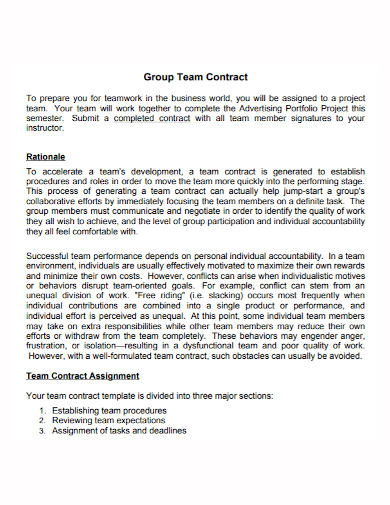
Size: 112 KB
2. Group Assignment Contract

Size: 373 KB
3. Group Collaboration Assignment Contract
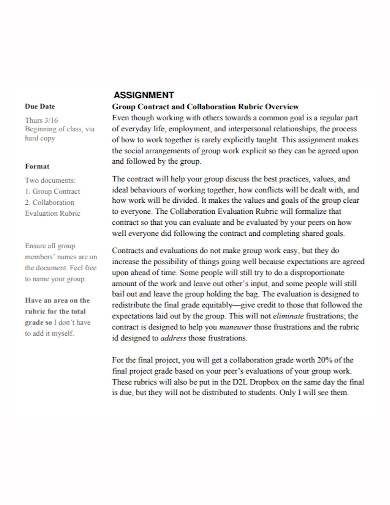
Size: 384 KB
4. Sample Group Assignment Contract

Size: 88 KB
5. Group Work Assignment Contract
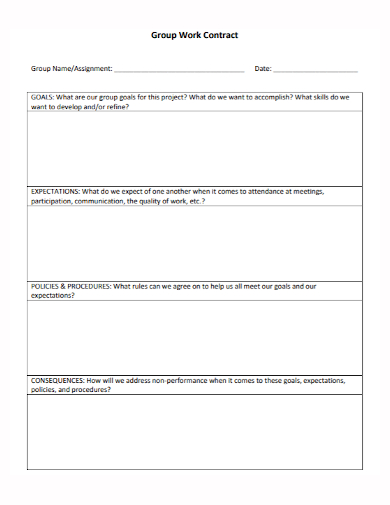
6. Student Group Assignment Contract
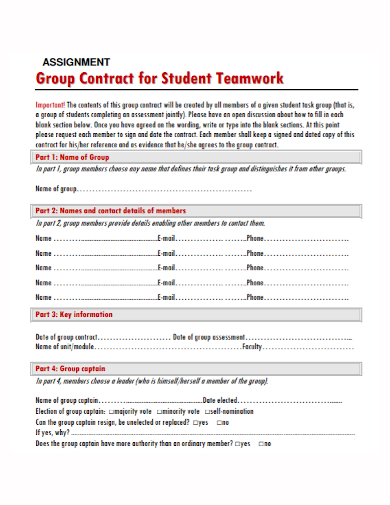
Size: 189 KB
7. Group Assignment Management Contract
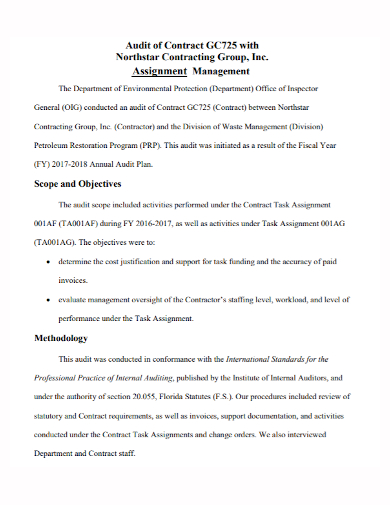
Size: 325 KB
8. Business Group Assignment Contract
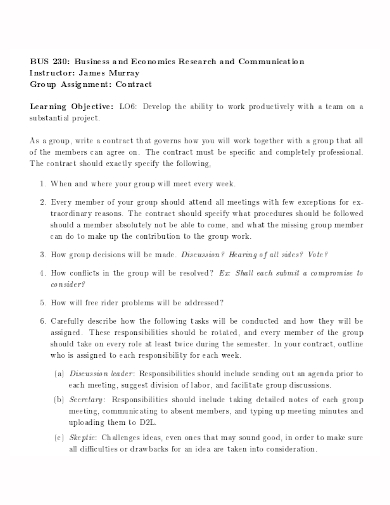
Size: 30 KB
9. Group Health Care Assignment Contract
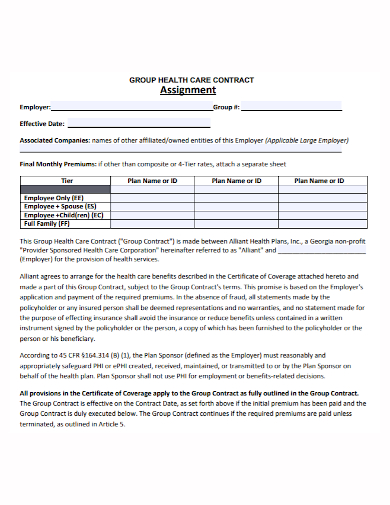
Size: 218 KB
10. Group Share Assignment Contract
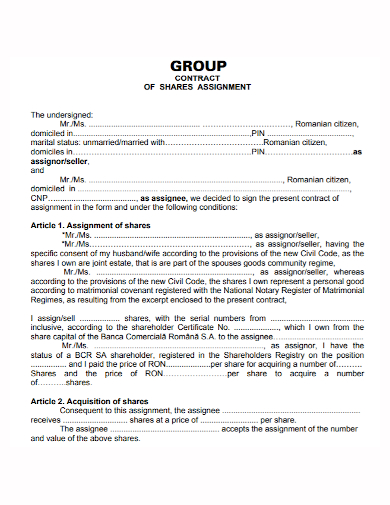
Size: 36 KB
11. Group Balancing Assignment Contract

Size: 457 KB
What is a Group Assignment Contract?
A group assignment contract simply called a group agreement or group contract is a written document that a particular group makes to officialize the expectations of group members . The contract can increase productivity and a good working experience for every member since they already know their roles and the tasks they need to do and accomplish and at the same time, respect other members and their roles as well.
Details to Include in a Group Assignment Contract
Making a group assignment contract may vary to what type of group you have, what activities you’re assigned to do, what organization you belong to, and what terms and conditions you agree to comply with. However, the details below should be present in your contract to ensure that it is written well and it contains all important details for your group members to agree on and use as a basis on how they will function well in the group.
- All group members’ names and their contact information
- Expectations: Also known as ground rules, these should be included to help members prepare themselves for the group work. You can include attendance, communication, meetings , behavior, tasks, and responsibilities to include in the ground rules. You can aim around five to seven ground rules.
- Assignment: This is now where you will assign specific tasks, roles , and responsibilities to every member that they are expected to follow and accomplish on a certain due date. If you’re not sure how to assign the tasks, you can itemize them first depending on which priority level they have and provide a space for each group member to volunteer to do the tasks.
- Problem resolution: Outline a specific process for dealing with unmet expectations or other concerns that might arise within the group. Make sure this process will deescalate the problem.
- Feedback: Provide a method on how each member will provide peer feedback while working throughout the tasks or projects you are all working on so any concerns or problems will be addressed before you complete any responsibilities you have. You can also ask the group members to present progress reports to know any updates of each member that has completed or working on.
- Signature line: Provide lines where each group member can sign indicating their agreement to the contract.
Why do groups need rules?
Groups need to have rules to avoid frustrations and misunderstandings by setting clear expectations of each other. They can be honest with what they want and expect to have and to do and they can also contribute their recommendations to enhance the group.
What are the benefits of creating a group contract?
There are a lot of benefits in forming groups, especially when they are tasked with working and learning together. The benefits are:
- It helps identify everyone’s expectations of one another and in return, they can communicate these expectations with each other.
- Increase a sense of community once they get to know and work with each other.
- It enhances deeper learning and strong information retention for members through teamwork.
What are some examples of group tasks?
Some examples of tasks that can be done by a group are:
- Ranking discussions
- Puzzle activities
- Project workgroup
- Group writing tasks
Once you’re done writing the contract, make sure to discuss it with your group members first before you finalize it. Welcome their questions and recommendations for the contract and write them down so you can revise them later. You must make sure that everyone is happy with the contents of the contract and nobody should feel that they are forced to agree on terms they didn’t give their approval freely. To help you get started making the contract, download our free sample templates above to use as your guide!
Related Posts
Free 10+ wholesale assignment contract samples in pdf, free 18+ financial proposal samples in pdf | ms word | google docs | pages, free 13+ witness letter samples in pdf | ms word, free 11+ awarding contract letter templates in pdf | ms word | google docs | pages, free 8+ sample material lists in ms word | pdf, free 10+ feasibility study samples in pdf, free 25+ sample contracts in pdf | ms word | excel, free 20+ readiness checklist samples in pdf, free 15+ nanny checklist samples in google docs | ms word | apple pages | pdf, free 8+ construction employment contract samples in ms word | google docs | pdf, free 7+ construction daily log samples in ms word | google docs | pdf, free 37+ supply request samples in pdf | ms word, free 13+ patient report samples in ms word | google docs | pdf, free 35+ sales request form samples in pdf | ms word, free 10+ agreement contract samples in pdf, free 11+ profit sharing agreement templates, free 11+ recording contract templates, free 10+ intellectual property agreement samples, free 10+ instructor agreement samples.
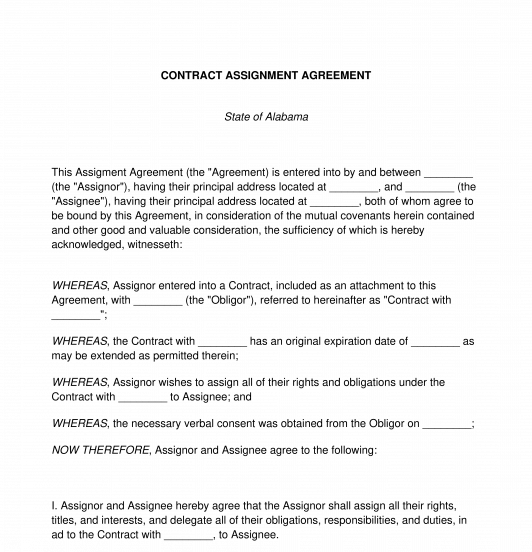
How does it work?
1. choose this template.
Start by clicking on "Fill out the template"
2. Complete the document
Answer a few questions and your document is created automatically.
3. Save - Print
Your document is ready! You will receive it in Word and PDF formats. You will be able to modify it.
Contract Assignment Agreement
Rating: 4.8 - 105 votes
This Contract Assignment Agreement document is used to transfer rights and responsibilities under an original contract from one Party, known as the Assignor, to another, known as the Assignee. The Assignor who was a Party to the original contract can use this document to assign their rights under the original contract to the Assignee, as well as delegating their duties under the original contract to that Assignee. For example, a nanny who as contracted with a family to watch their children but is no longer able to due to a move could assign their rights and responsibilities under the original service contract to a new childcare provider.
How to use this document
Prior to using this document, the original contract is consulted to be sure that an assignment is not prohibited and that any necessary permissions from the other Party to the original contract, known as the Obligor, have been obtained. Once this has been done, the document can be used. The Agreement contains important information such as the identities of all parties to the Agreement, the expiration date (if any) of the original contract, whether the original contract requires the Obligor's consent before assigning rights and, if so, the form of consent that the Assignor obtained and when, and which state's laws will govern the interpretation of the Agreement.
If the Agreement involves the transfer of land from one Party to another , the document will include information about where the property is located, as well as space for the document to be recorded in the county's official records, and a notary page customized for the land's location so that the document can be notarized.
Once the document has been completed, it is signed, dated, and copies are given to all concerned parties , including the Assignor, the Assignee, and the Obligor. If the Agreement concerns the transfer of land, the Agreement is then notarized and taken to be recorded so that there is an official record that the property was transferred.
Applicable law
The assignment of contracts that involve the provision of services is governed by common law in the " Second Restatement of Contracts " (the "Restatement"). The Restatement is a non-binding authority in all of U.S common law in the area of contracts and commercial transactions. Though the Restatement is non-binding, it is frequently cited by courts in explaining their reasoning in interpreting contractual disputes.
The assignment of contracts for sale of goods is governed by the Uniform Commercial Code (the "UCC") in § 2-209 Modification, Rescission and Waiver .
How to modify the template
You fill out a form. The document is created before your eyes as you respond to the questions.
At the end, you receive it in Word and PDF formats. You can modify it and reuse it.
Other names for the document:
Assignment Agreement, Assignment of Contract Agreement, Contract Assignment, Assignment of Contract Contract, Contract Transfer Agreement
Country: United States
General Business Documents - Other downloadable templates of legal documents
- Amendment to Agreement
- Loan Agreement
- Loan Agreement Modification
- Release of Loan Agreement
- Non-Compete Agreement
- Partnership Dissolution Agreement
- Notice of Withdrawal from Partnership
- Power Of Attorney
- Debt Acknowledgment Form
- Meeting Minutes
- Request to Alter Contract
- Release Agreement
- Guaranty Agreement
- Joint Venture Agreement
- Debt Settlement Agreement
- Breach of Contract Notice
- Corporate Proxy
- Mutual Rescission and Release Agreement
- Notice for Non-Renewal of Contract
- Meeting Notice
- Other downloadable templates of legal documents

Developing a Group Contract
Try our AI Legal Assistant - it's free while in beta 🚀

Genie's AI Legal Assistant can draft, risk-review and negotiate 1000s of legal documents
Note: Want to skip the guide and go straight to the free templates? No problem - scroll to the bottom. Also note: This is not legal advice.
Introduction
Creating a group contract is essential for teams looking to work together efficiently and effectively. Having a clear agreement in place helps to provide clarity on the expectations, roles, and responsibilities of each team member. It structures the goals of the team and sets out how these will be accomplished, as well as outlining expected behaviour from each individual. A group contract also serves to protect the team from external risks, while providing a sense of security that everyone is being held accountable for their actions.
The Genie AI team understand how important it is for groups of people to come together and collaborate on projects in an open and honest way - without fear of judgement or criticism - fostering a sense of trust amongst team members. That’s why Genie AI has developed the world’s largest open source legal template library; millions of datapoints teach their AI what constitutes a market-standard agreement, enabling anyone to create high quality documents without paying a lawyer.
Group contracts are not only used by teams working with large-scale projects with lots at stake; even small-scale activities benefit from having agreements in place which outline behaviour expectations and promote accountability amongst all involved. With this guide, you can access our free templates today - no Genie AI account necessary - for step-by-step guidance on creating your own group contract tailored to your specific needs. Get started now!
Definitions (feel free to skip)
Short-term and long-term goals - Goals that are either aimed at achieving results in the near future (short-term) or in the distant future (long-term). Key performance indicators - Specific metrics used to measure success or progress towards a goal. Roles and responsibilities - The tasks and duties that each group member is assigned to complete. Method of communication - The type of communication (email, phone calls, text messages, etc.) used between group members. Frequency of communication - How often group members communicate with each other (daily, weekly, etc.). Decision-making authority - Who is in charge of making decisions for the group. Decision-making criteria - The process used to decide on a course of action. Conflicts and disagreements - Disagreements between group members on a particular topic. Ground rules - Rules that govern the behavior and communication of the group. Accountability - Who is responsible for completing each task or goal. Timelines and deadlines - The amount of time that is allocated for completing a task or achieving a goal. Review process - The process used to evaluate the progress of a group.
Establishing group goals and expectations
Setting short-term and long-term goals, identifying key performance indicators, creating a timeline for goal achievement, clarifying roles and responsibilities, identifying the team members and their roles, defining expectations for each role, establishing primary and secondary responsibilities, agreeing on communication protocols, establishing the method of communication, establishing frequency of communication, establishing a shared platform for communication, identifying decision-making processes, establishing decision-making authority, establishing decision-making criteria, establishing a process for making decisions, resolving conflicts and disagreements, identifying potential areas of disagreement, establishing protocols for addressing conflicts, establishing a process for resolving disagreements, establishing ground rules, identifying ground rules, clarifying expectations for team members, defining accountability, establishing who is accountable for what, establishing consequences for non-compliance, establishing timelines and deadlines, establishing deadlines for completion of tasks, establishing timelines for goal achievement, establishing a review process, establishing criteria for reviewing progress, establishing a timeline for reviews, finalizing and signing the contract, reviewing and revising the contract, obtaining sign-off from all parties, get started.
- Brainstorm a list of expectations for group members
- Agree on group goals for the project
- Have each member sign the contract as a commitment to the group
- Make sure all members are on the same page and understand the expectations
- Once all members have agreed and signed off, you can move on to the next step.
- Discuss the group’s long-term goals and the steps necessary to get there
- Agree on a timeline for achieving the goals and set short-term goals that will help the group reach their long-term goal
- Outline the milestones needed to reach the short-term goals and identify the responsibilities of each group member
- Establish a timeline for each short-term goal and assign deadlines for each
- Make sure that the goals are achievable, realistic and measurable
- When the goals and timeline have been agreed upon, document the agreement in a group contract
- Once the group contract is signed, the group has reached the end of this step and can move on to the next step of identifying key performance indicators.
- Brainstorm with the group and identify measurable performance indicators that can be used to assess progress towards the goals
- Set a timeline for assessing the performance indicators, and decide how often they will be monitored
- Create a system for tracking performance indicators and ensure everyone in the group is aware and can access it
- When all of the performance indicators have been identified, agreed upon, and set up in a tracking system, this step is complete and you can move on to creating a timeline for goal achievement.
- Discuss with the group what the timeline should be and agree on a timeline for goal achievement.
- Brainstorm ideas and agree on a timeline that is realistic, achievable and takes into account any external factors that may affect the timeline.
- Take into account the amount of time needed to complete each task, resources required and the availability of these resources.
- Assign tasks to group members and provide a timeline for each task.
- Agree on deadlines for each task and milestones for the entire project.
- Document the timeline and milestones in the group contract.
- Check that everyone agrees with the timeline and milestones and make any necessary revisions.
How you’ll know when you can check this off your list and move on to the next step:
- Once the timeline has been agreed upon and documented in the group contract, you can move on to clarifying roles and responsibilities.
- Make a list of all the tasks that need to be completed in order to achieve the goal.
- Assign tasks to each member of the group and make sure everyone is clear on what tasks they are responsible for.
- Discuss any roles and responsibilities that might overlap between members.
- Make sure everyone is aware of any deadlines for tasks.
- When all tasks are assigned and everyone is clear on their roles and responsibilities, check this step off the list and move on to the next step.
- Brainstorm a list of team members, their roles and responsibilities, and any other necessary information
- Create a spreadsheet that outlines the information you brainstormed
- Have each team member review and sign the spreadsheet
- Make sure each team member is aware of their roles and expectations
- Once everyone has reviewed and signed the spreadsheet, you can move on to the next step.
- Outline the expectations for all team members in terms of their roles and responsibilities
- Ask everyone to review the expectations and provide feedback
- Address any questions or concerns that have been raised
- Modify the expectations as needed to ensure everyone is in agreement
- Once everyone is in agreement, document the expectations for each role
- Ensure that each team member has a copy of the expectations for their role
- Check off this step when everyone has a copy of the expectations for their role and are in agreement.
• Agree on the primary and secondary roles each group member will assume. • Ensure all roles are necessary for the team to function properly. • Assign roles based on each person’s strengths, interests, and availability. • Record the roles in the group contract. • When everyone has agreed on the primary and secondary roles, you can check this off your list and move on to the next step.
- Brainstorm the type of communication protocols the group should use and why
- Discuss how often communication should take place and the various ways in which communication should take place (e.g. in-person meetings, phone calls, emails, etc.)
- Discuss any specific topics that should be discussed at meetings
- Come to a consensus on the communication protocols that will be used and document them
- Once everyone agrees on the communication protocols and they have been documented, the group can move on to the next step of establishing the method of communication.
- Identify preferred communication methods among members of the group (e.g. email, video conferencing, etc.)
- Discuss the pros and cons of each method and come to a consensus on the method that works best for everyone
- Decide on a system for shared communication (e.g. shared email address, group chat, etc.)
- Decide on a primary method of communication for the group
- Establish protocols for when and how communication should be used (e.g. email for formal communication, group chat for faster communication, etc.)
When you can check this off your list and move onto the next step:
- Once all members of the group have agreed on a preferred method of communication, protocols for when and how communication should be used, and any other details related to communication, you can move onto the next step.
- Discuss the frequency of communication that will work for all members of the group
- Consider the needs of the group, such as the timeline and workload of the project
- Agree on the frequency of communication that is practical and manageable for all members
- Establish check-in times throughout the duration of the project
- Decide who is responsible for initiating communication in the group
- Note down all decisions in the group contract
- Once all decisions are noted, check off this step and move on to the next step in the group contract.
- Brainstorm with the group about the best platform for communication (e.g., email, messaging app, video conferencing app).
- Determine the most suitable platform for the group based on the group’s needs and preferences.
- Setup the platform and make sure all group members have access to it.
- Test the platform to make sure it works correctly and all group members are comfortable using it.
- You’ll know you can check this off your list and move on to the next step when you have established a shared platform for communication that all group members are comfortable using.
• Develop a decision-making process that works for the group. Questions to consider include: how quickly do decisions need to be made, what is the process for voting, how will dissent be handled, and how will decisions be communicated? • Brainstorm and discuss the best process to use for decision-making in the group. • Agree on a process that works for the majority. • Document the decision-making process so there is a clear understanding of how decisions will be made. • You can check this off your list once the decision-making process has been documented and agreed upon.
- Determine who has the authority to make decisions within the group.
- Consider assigning a specific person to have primary decision-making authority or a rotating decision-maker.
- Discuss and determine the roles and responsibilities of each group member in making decisions.
- Establish clear guidelines for when and how decisions are to be made.
- Agree upon a process for resolving conflicts around decision-making.
- When all group members have agreed upon the decision-making authority, check this step off your list and move on to the next step of establishing decision-making criteria.
- Decide what criteria the group will use to make decisions (ex. Majority rule, unanimous decision, etc.)
- Be sure that every member of the group is aware of and agrees to the criteria.
- Discuss and agree on potential exceptions to the criteria, if any.
- Outline consequences for failure to adhere to the criteria.
- Record the criteria and any exceptions in the group contract.
Once these steps have been completed, the group can move on to the next step of establishing a process for making decisions.
- Discuss how decisions will be made within the group: voting, consensus, small group decisions, etc.
- Outline the process for making decisions so that everyone is clear on the expectations.
- Be sure to define roles and responsibilities for making decisions.
- Make sure all members are aware of and understand the process for making decisions.
- Once you have established the process for making decisions, check this step off your list and move on to resolving conflicts and disagreements.
- Brainstorm potential solutions and come up with a plan for how to resolve the disagreement.
- Decide on a method for resolving the disagreement that is agreeable to all members.
- Agree on steps to take to prevent similar disagreements in the future.
- Ensure that all members are comfortable with the resolution and that it is fair and equitable.
- Document the outcome of the resolution in the group contract.
Once the resolution is discussed and agreed upon, the group can check if off their list and move on to the next step.
- Brainstorm a list of potential areas of disagreement that may arise in the group
- Consider the unique personalities and dynamics of the group
- Discuss these areas of disagreement with the group and come to a consensus on how to address them
- When everyone in the group is in agreement about the potential areas of disagreement and how to address them, you can check this step off your list and move on to the next step.
- Brainstorm and discuss potential conflicts that could arise within the group.
- Collaboratively develop a set of protocols that all members of the group can agree on for addressing conflicts.
- Consider how to handle miscommunications, how to defuse disagreements, and how to ensure all members feel heard.
- Ensure that the protocols are clear, actionable, and agreed upon by all members.
Once the protocols have been established, the group can move on to the next step of establishing a process for resolving disagreements.
- Brainstorm possible ways to resolve disagreements such as discussion, mediation, and voting
- Discuss and agree on which of the brainstormed methods should be used in the group
- Document all agreed-upon methods of resolving disagreements, including any details such as who will be involved in the discussion, how the voting will take place, etc.
- Have each member of the group sign off on the agreement
- Once all members have agreed and signed off, the process for resolving disagreements is complete and you can move on to the next step.
- Brainstorm a list of ground rules for the group to follow
- Discuss and agree on the ground rules as a group
- Make sure all ground rules are in line with the overall goals of the group
- Write down the ground rules and have each member sign the contract
- Review the contract regularly to ensure everyone is following the rules
- When everyone is in agreement and has signed the contract, this step is complete
- Brainstorm a list of ground rules for the team to follow
- Discuss each ground rule and ensure everyone agrees with each one
- Consider how to best enforce the ground rules, if needed
- Record the ground rules in a written group contract
- Ensure everyone in the team has a copy of the group contract
- When everyone agrees to the group contract, and it is written down, you can move on to the next step.
• Ask each team member about their expectations for the team and their own role. • Make sure that the expectations for the team and for individual team members are realistic, achievable, and specific. • Record the expectations of the team and each member in a written contract. • Ask each team member to sign the contract to show their commitment to the expectations.
You can check this step off your list once you have a written contract that all members have agreed to and signed.
• Define what accountability means for the group – this should include how to handle and respond to any issues that might arise, such as missed deadlines or poor communication. • Establish a process for conflict resolution and how the team will handle disagreements. • Outline expectations for communication, such as when and how often the group will check in with each other. • Determine how often the group will review the contract and if any changes will need to be made. • Create a plan for how the team will document their progress and successes.
You will know you can check this off your list and move on to the next step when all members of the group have agreed to the accountability measures outlined in the contract.
- Discuss with the group who will be accountable for which areas and agree on who will be responsible for what.
- Create a list of things that need to be done, and decide who will be accountable for each one.
- Make sure everyone understands their responsibilities, and that everyone is comfortable with their role.
- When everyone is clear on their roles and responsibilities, record the responsibilities in the group contract.
- Check off this step when everyone has agreed to their roles and responsibilities and these have been recorded in the group contract.
- Discuss with the group what should happen if any member does not comply with the contract
- Decide on a consistent set of consequences that apply to all members
- Make sure all members understand the consequences of not complying with the group contract
- Document the consequences in the contract
- Check that all members have agreed to the consequences and sign the contract
- Once the members have agreed and signed the contract, you can move on to the next step of establishing timelines and deadlines.
- Discuss and agree on timelines and deadlines for completing tasks as a group.
- Break down tasks into manageable chunks and set deadlines for each.
- Consider the availability of each group member and other factors that may affect the deadlines.
- Ensure that each deadline is realistic and achievable.
- Assign tasks to each member and set deadlines for each task.
- Document the agreed upon deadlines and timelines.
- When all tasks have been assigned and deadlines are agreed upon, you can move on to the next step.
- Establish deadlines for each task that the group commits to completing.
- Have each member of the group commit to completing their task by the established deadlines.
- Establish a timeline for the completion of the entire project, and use the individual deadlines to ensure that the timeline is met.
- Make sure to leave room for unexpected delays or changes in the timeline.
- Once all deadlines have been established and committed to, you can move on to the next step.
- Set a timeline for each goal that the group has set.
- Discuss and agree on a timeline that is realistic and achievable.
- Determine how often the group will meet to review progress.
- Decide how to measure the progress towards the group’s goals.
- Outline a plan of action that will be used to reach the group’s goals.
- Establish deadlines for each step of the plan of action and make sure that everyone is aware of them.
- Once these timelines have been established, the group can check off this step and move on to the next one.
• Establish a plan and timeline for how your group will review its progress. • Consider how often you will review progress, and how you will go about doing so. • Include ways to assess if individuals are meeting their goals, and if the team as a whole is achieving its objectives. • Determine who will be responsible for leading and facilitating the review process. • Decide how review sessions will be documented and shared with the group. • Agree on a plan for addressing any issues that arise during the review process.
Once you have established a plan and timeline for how your group will review its progress, you can check this off your list and move on to the next step.
- Brainstorm criteria for evaluating progress that all group members can agree on
- Examples of criteria include meeting deadlines, completing assigned tasks, and demonstrating collaboration
- Use these criteria to develop a rubric for evaluating progress
- Once the criteria and rubric are agreed upon by all group members, the step is complete
- Set a timeline for how often the group should review progress, such as monthly or quarterly
- Decide how long reviews should last and how they will be conducted
- Determine who will lead the reviews, such as the facilitator or a rotating member of the group
- Agree on any expectations for the reviews, such as whether members must prepare something in advance
- Discuss any consequences or rewards that may apply based on the group’s performance
- Once all of the details have been established, the participants should all agree on the timeline for reviews
- When everyone is satisfied with the timeline, you can check it off the list and move on to finalizing and signing the contract.
- Finalize the contract by making sure all the agreed-upon items by the group are included in the document
- Have each group member sign the contract to signify their agreement to the terms
- Make sure all signatures are included on the document
- Once all signatures are present, the contract can be officially declared as finalized and signed by the group
- When all the signatures are present, the contract is complete and you can check this off your list and move on to the next step.
- Read the final contract to ensure all points are addressed.
- Make any necessary changes or revisions suggested by any of the involved parties.
- Have each party review the revised contract and provide feedback.
- Make any further changes as needed.
- You can check this off your list and move on to the next step once all parties have approved the revised contract.
- Send a copy of the contract to all people in the group
- Ask for each person in the group to sign the contract
- Ensure that all parties agree to the terms of the contract
- Once all parties have signed the contract, it is officially in effect and ready to be used
- How you’ll know when you can check this off your list and move on to the next step: once all parties have signed the contract.
Q: Will developing a group contract be beneficial for my business?
Asked by Jada on May 16th, 2022. A: Developing a group contract can be beneficial in many ways, as it sets out clear expectations between the parties involved and can protect both parties’ interests. It can help to set clear boundaries, define roles and responsibilities and ensure that all parties are aware of their obligations. It also helps to avoid disagreements and disputes in the future by setting out agreed terms. Ultimately, a group contract can ensure that all parties are clear on their rights and obligations, and can be a useful tool in protecting both sides.
Q: What is the difference between a group contract in the UK, USA, and EU?
Asked by Jayden on March 3rd, 2022. A: The main differences between a group contract in the UK, USA, and EU are mainly related to the laws and regulations governing them. In the UK, for example, Group Contracts are generally governed by the Contracts Act of 1990 which provides guidance on how to form a legally binding agreement between multiple parties. In the USA, contracts are usually governed by state specific legislation which may vary from state to state. Similarly, in the EU there are different laws applicable to each country. It’s important to understand which laws apply to your situation before entering into any agreement.
Q: What type of clauses should I include in my group contract?
Asked by Noah on August 5th, 2022. A: When creating a group contract it is important to include clauses that clearly define the rights and responsibilities of each party involved. This could include clauses outlining how disputes will be resolved, how changes or amendments to the agreement will be handled and what remedies are available if any of the terms are breached. It is also important to include clauses that protect confidential information or set out intellectual property rights. Furthermore, if any of the parties involved have special requirements or needs then these should also be included in the agreement so that all parties are aware of them.
Q: How do I ensure my group contract is legally binding?
Asked by Isabella on July 4th, 2022. A: To ensure that your group contract is legally binding you need to make sure that it meets all of the legal requirements for contracts in your jurisdiction (i.e UK/USA/EU). This means that you need to make sure that it meets all of the legal requirements for contracts such as having sufficient consideration (i.e money or other goods/services) for both parties, having an offer and acceptance of terms by both parties and having a clear intention to create legal relations between both parties. You should also ensure that all parties involved have given their consent to enter into the agreement before signing it so that it is legally binding.
Q: What happens if one party breaches their obligations under the group contract?
Asked by Emma on January 9th, 2022. A: If one party breaches their obligations under a group contract then this may give rise to legal action against them by either party depending on the terms set out within the agreement and applicable law in your jurisdiction (i.e UK/USA/EU). Generally speaking this would involve one party seeking damages or compensation from another party if they have suffered loss or damage due to their breach of obligations under the agreement. Depending on the nature of the breach there may also be additional remedies available such as injunctions or specific performance orders which would require one party to take a certain action or refrain from taking certain actions as set out within the agreement.
Q: How do I create an enforceable group contract?
Asked by Liam on April 2nd, 2022. A: To create an enforceable group contract you need to make sure that it meets all legal requirements for contracts in your jurisdiction (i.e UK/USA/EU). This means making sure that there is sufficient consideration for both parties involved, offer and acceptance of terms by both parties, clear intention to create legal relations between both parties and consent from all parties involved before signing it so that it is legally binding. You should also make sure that you include any relevant clauses such as those related to dispute resolution and intellectual property rights as well as any special requirements or needs that any of the parties involved may have.
Q: Are there any additional considerations I should take into account when developing a group contract?
Asked by Ava on November 17th, 2022. A: Yes, when developing a group contract there are several additional considerations you should take into account such as making sure you consider any potential conflicts of interest between any of the parties involved as well as making sure you consider any potential tax implications or liabilities associated with entering into such an agreement in your jurisdiction (i.e UK/USA/EU). You should also consider whether you need any specific insurance policies or other protection measures in place before signing such an agreement as well as making sure you have taken advice from qualified professionals if necessary (such as solicitors). Finally you should also consider whether any particular industry standards apply which may affect how you draft your agreement so that it is compliant with these standards where applicable.
Example dispute
Raising a lawsuit based on a group contract.
- Consult relevant legal documents, regulations and civil law to determine if a lawsuit can be raised and if so, the legal requirements for doing so.
- Determine information or actions that have occurred that could be the basis for a lawsuit.
- Consider possible settlements that could be reached and how a settlement could be enforced.
- Determine if there are damages involved and if so, how they should be calculated.
- File the lawsuit and provide evidence that the group contract was violated and how the plaintiff was affected.
- If the plaintiff can prove that the group contract was violated, the plaintiff may be able to win the lawsuit and receive damages.
Templates available (free to use)
Group Contract
Helpful? Not as helpful as you were hoping? Message me on Linkedin
Links to get you started
Our AI Legal Assistant (free while in beta) Contract Template Library Legal Clause Library
Try the world's most advanced AI Legal Assistant, today


Faculty Learning Hub
Team contracts for healthy group work.
By Rachel Schultz, B.A., B.Ed., M.Ed, OCT, TESL Professor, School of Interdisciplinary Studies
This teaching tip describes the value of team contracts for group work the Group Dynamics course, and provides a sample team contract for download along with tips for facilitating team contracts for student groups.

As a faculty member for about 13 years with Interdisciplinary Studies, I have been evolving my practice of engaging students in collaborative learning both online and in-class to incorporate team contracts. Part of my role as a member of the Group Dynamics “consultant team” involves developing and delivering a team contract activity that offers structure and supports to help students work more effectively in groups while minimizing conflict.
Conflict in Group Work
My time while teaching and evaluating courses with group work without a team contract activity was spent mostly in 1 of 2 ways: 1) managing conflict in teams with a non-performing member, or with no clear organizational structure, or 2) supporting teams who were unable to communicate with me at check in points, but then communicated issues too near the deadline to really catch up.
Some of the most common work conflicts among group members included unequal completion of work, disagreements between goals, issues communicating or connecting individuals on same team, and general unscholarly behaviour.
There were also an increasing number of cultural conflicts regarding expectations for how teams should function and who should be the one to decide these norms. It felt as if there was no mechanism for ensuring fair distribution of grades or way to support students who were working together while respecting their autonomy to manage the group in a way that best suited their needs.
These conflict situations were particularly challenging in asynchronous online courses, and could lead to student disengagement in in-class courses or follow-up work to defend student appeals.
Supporting Group Work with Team Contracts
A team contract is an agreement amongst all group members about the shared group processes and behavioural expectations. Contract points usually relate to expectations regarding quality of work, adherence to team deadlines, communication, and pre-agreed upon consequences for contract violations.
In order for the idea of a team contract to take hold, students often require gentle permission and examples of situations involving contracts from groups in past classes to really feel comfortable openly discussing and drafting an effective team contract. It’s important for the professor to provide feedback on the team contract before it is signed and finalized by each group member to ensure common situations are effectively planned for.
If contracts are violated, students usually experiment, starting with a documented warning and progressing to removal from the team as a final resolution for severe and repeated failure to positively contribute to the team. A student who agrees to the latter example has forfeited their right to future grades earned by the team (which fortunately we don’t have to enforce often).
In the case of the Group Dynamics course, the professor (in a Consultant role) provides structure as students apply their team contract in the pursuit of course and team goals. Often a warning to students about the need to review the team contract is enough to prompt productive group discussion that yields a more cohesive and effective team without the application of a penalty.
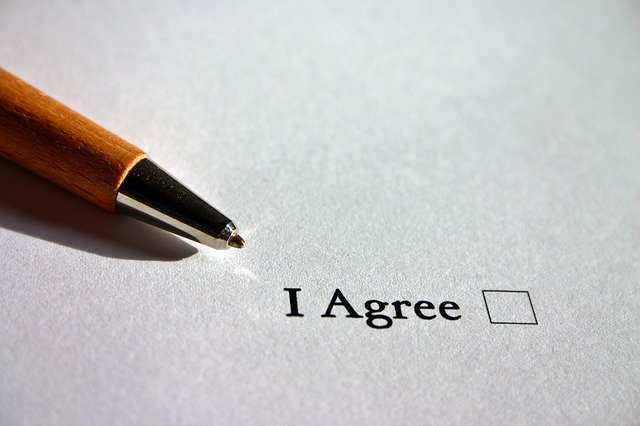
The Benefits of Team Contracts
I have noticed improvement in the quality of group work when team contracts are used. It is one of the pleasures of the job to sit in on critical group conversation of contract points, which often go deeper than the initial flashpoint of the issue. I’ve seen students agree to rework their contract to adapt to changing situations, bravely use the contract to navigate challenging conversations with their peers, and candidly share stories of their experiences in ways that empowers individuals and broadens perspectives.
With the implementation of a team contract and mechanism that has students outline division of work, process expectations, documentation, and enact their own team norms, faculty are able to concentrate on more rewarding ongoing formative evaluation, which has an immediate impact on student collaboration and team experience.
As well, the team contract shows students that we do not make assumptions that all students have the same cultural experience and expectations of team work, but rather that we acknowledge that all members of a team are valued in the ongoing dialogue about the team process.
Download the Group Dynamics Team Contract Exemplar
Tips for facilitating team contracts.
- Align with learning outcomes: Spend time thinking through how you are addressing your course outcomes and what you are asking of students in the context of their larger schedule. Attempt to align contract or charter expectations to your field and with other program courses.
- Give feedback and grades: Provide feedback and grades for a team contract before it is finalized and enacted by a team. A good contract must account for a wide variety of situations and include documentation expectations – it is difficult to manage behaviour that is not accounted for on the contract. Many of the college standards can be found on the website and can be used to create your contract template. See Academic Offences (unscholarly behaviour), APA Formatting, Program Handbooks, etc.
- Address concerns directly: Show students that the team agreements are important by taking time to seriously address student contract concerns as they come up. Schedule a check in point with a team leader or reach out if teams don’t connect with you. You may have to stimulate discussion to get students to think more deeply if they report no problems – watch out for groupthink or dominating members in these cases. Document all group issues through email or personal notes as you go, as these are often valuable later!
- Continually improve the contract activity: Review the documents you make on group issues to note any patterns. Also, listen to your students’ comments on your evaluation choices and be prepared to make revisions for next time.
For more information on the Group Dynamics course, see the teaching story, Building Future Success in Teamwork with Group Dynamics.
Related Posts

Five Resources to Help New Faculty get off to a Good Start

Facilitator Notes for the Academic Team

Ideas for Empowering Online Learners
- Skip to primary navigation
- Skip to main content
- Skip to primary sidebar
- Skip to footer
Legal Templates
Home Business Assignment Agreement
Assignment Agreement Template
Use our assignment agreement to transfer contractual obligations.

Updated February 1, 2024 Reviewed by Brooke Davis
An assignment agreement is a legal document that transfers rights, responsibilities, and benefits from one party (the “assignor”) to another (the “assignee”). You can use it to reassign debt, real estate, intellectual property, leases, insurance policies, and government contracts.
What Is an Assignment Agreement?
What to include in an assignment agreement, how to assign a contract, how to write an assignment agreement, assignment agreement sample.

Partnership Interest
An assignment agreement effectively transfers the rights and obligations of a person or entity under an initial contract to another. The original party is the assignor, and the assignee takes on the contract’s duties and benefits.
It’s often a requirement to let the other party in the original deal know the contract is being transferred. It’s essential to create this form thoughtfully, as a poorly written assignment agreement may leave the assignor obligated to certain aspects of the deal.
The most common use of an assignment agreement occurs when the assignor no longer can or wants to continue with a contract. Instead of leaving the initial party or breaking the agreement, the assignor can transfer the contract to another individual or entity.
For example, imagine a small residential trash collection service plans to close its operations. Before it closes, the business brokers a deal to send its accounts to a curbside pickup company providing similar services. After notifying account holders, the latter company continues the service while receiving payment.
Create a thorough assignment agreement by including the following information:
- Effective Date: The document must indicate when the transfer of rights and obligations occurs.
- Parties: Include the full name and address of the assignor, assignee, and obligor (if required).
- Assignment: Provide details that identify the original contract being assigned.
- Third-Party Approval: If the initial contract requires the approval of the obligor, note the date the approval was received.
- Signatures: Both parties must sign and date the printed assignment contract template once completed. If a notary is required, wait until you are in the presence of the official and present identification before signing. Failure to do so may result in having to redo the assignment contract.
Review the Contract Terms
Carefully review the terms of the existing contract. Some contracts may have specific provisions regarding assignment. Check for any restrictions or requirements related to assigning the contract.
Check for Anti-Assignment Clauses
Some contracts include anti-assignment clauses that prohibit or restrict the ability to assign the contract without the consent of the other party. If there’s such a clause, you may need the consent of the original parties to proceed.
Determine Assignability
Ensure that the contract is assignable. Some contracts, especially those involving personal services or unique skills, may not be assignable without the other party’s agreement.
Get Consent from the Other Party (if Required)
If the contract includes an anti-assignment clause or requires consent for assignment, seek written consent from the other party. This can often be done through a formal amendment to the contract.
Prepare an Assignment Agreement
Draft an assignment agreement that clearly outlines the transfer of rights and obligations from the assignor (the party assigning the contract) to the assignee (the party receiving the assignment). Include details such as the names of the parties, the effective date of the assignment, and the specific rights and obligations being transferred.
Include Original Contract Information
Attach a copy of the original contract or reference its key terms in the assignment agreement. This helps in clearly identifying the contract being assigned.
Execution of the Assignment Agreement
Both the assignor and assignee should sign the assignment agreement. Signatures should be notarized if required by the contract or local laws.
Notice to the Other Party
Provide notice of the assignment to the non-assigning party. This can be done formally through a letter or as specified in the contract.

File the Assignment
File the assignment agreement with the appropriate parties or entities as required. This may include filing with the original contracting party or relevant government authorities.
Communicate with Third Parties
Inform any relevant third parties, such as suppliers, customers, or service providers, about the assignment to ensure a smooth transition.
Keep Copies for Records
Keep copies of the assignment agreement, original contract, and any related communications for your records.
Here’s a list of steps on how to write an assignment agreement:
Step 1 – List the Assignor’s and Assignee’s Details
List all of the pertinent information regarding the parties involved in the transfer. This information includes their full names, addresses, phone numbers, and other relevant contact information.
This step clarifies who’s transferring the initial contract and who will take on its responsibilities.
Step 2 – Provide Original Contract Information
Describing and identifying the contract that is effectively being reassigned is essential. This step avoids any confusion after the transfer has been completed.
Step 3 – State the Consideration
Provide accurate information regarding the amount the assignee pays to assume the contract. This figure should include taxes and any relevant peripheral expenses. If the assignee will pay the consideration over a period, indicate the method and installments.
Step 4 – Provide Any Terms and Conditions
The terms and conditions of any agreement are crucial to a smooth transaction. You must cover issues such as dispute resolution, governing law, obligor approval, and any relevant clauses.
Step 5 – Obtain Signatures
Both parties must sign the agreement to ensure it is legally binding and that they have read and understood the contract. If a notary is required, wait to sign off in their presence.

Related Documents
- Purchase Agreement : Outlines the terms and conditions of an item sale.
- Business Contract : An agreement in which each party agrees to an exchange, typically involving money, goods, or services.
- Lease/Rental Agreement : A lease agreement is a written document that officially recognizes a legally binding relationship between two parties -- a landlord and a tenant.
- Legal Resources
- Partner With Us
- Terms of Use
- Privacy Policy
- Do Not Sell My Personal Information

The document above is a sample. Please note that the language you see here may change depending on your answers to the document questionnaire.
Thank you for downloading!
How would you rate your free template?
Click on a star to rate
51+ SAMPLE Group Contracts in PDF | MS Word | Google Docs
Group contracts | ms word | google docs, 51+ sample group contract templates, what is a group contract, qualities of an excellent group member, how to effectively work in a group, who creates the group contract, what is a working contract, what are “ground” rules.
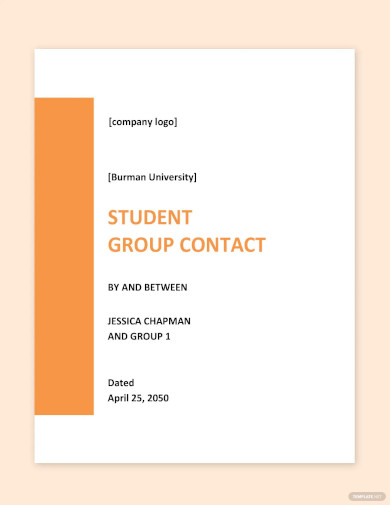
Student Group Contract Template
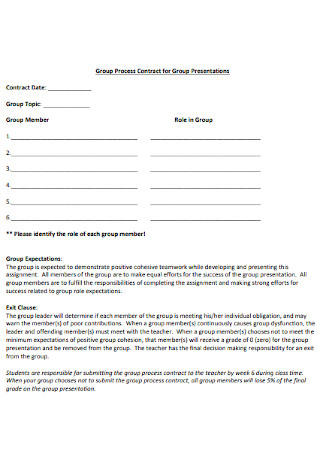
Contract for Group Presentations Template
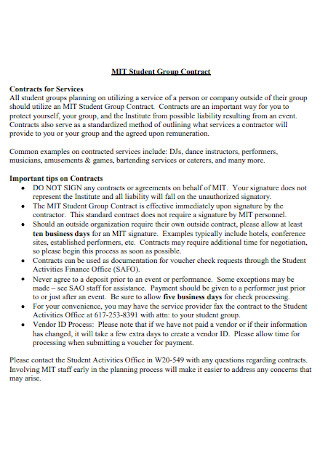
Student Group Contract
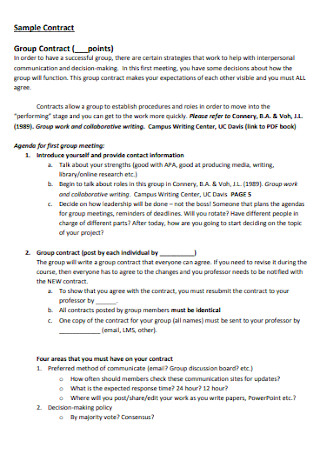
Sample Group Contract
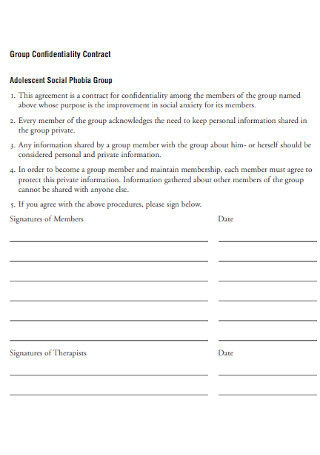
Group Confidentiality Contract
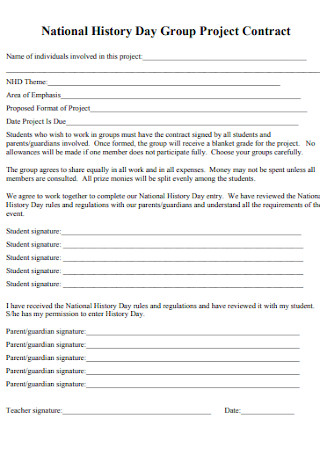
Group Project Contract
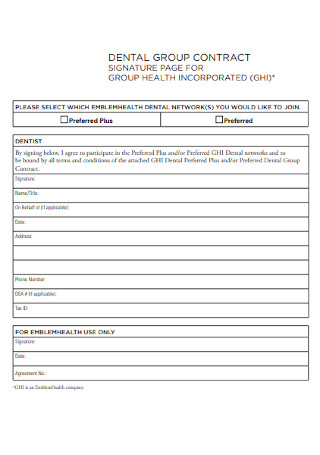
Dental Group Contract
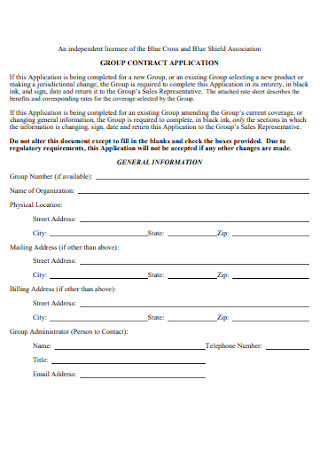
Group Contract Application Template
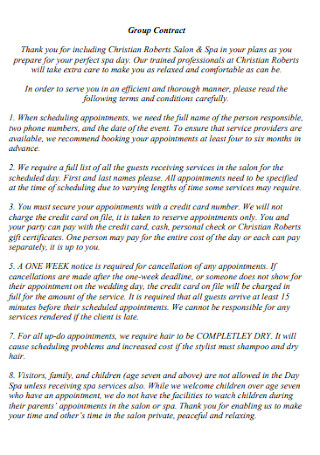
Basic Group Contract Template
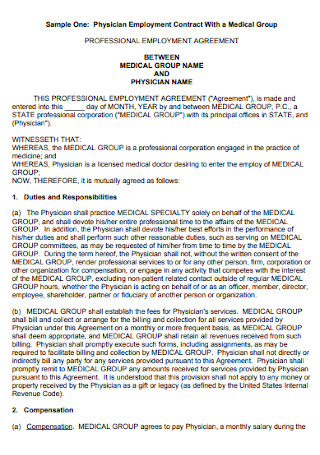
Employment Group Contract
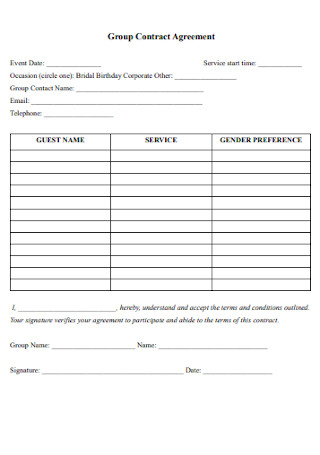
Group Contract Agreement
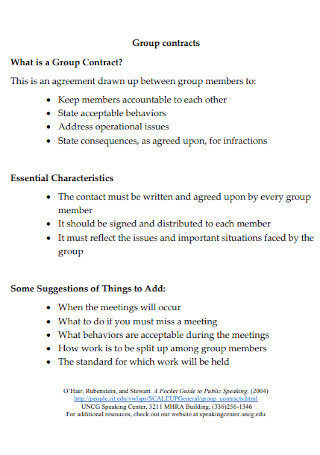
Simple Group Contracts Template

Group Work Contract
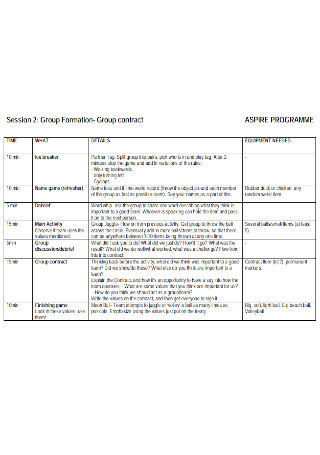
Group Formation Contract
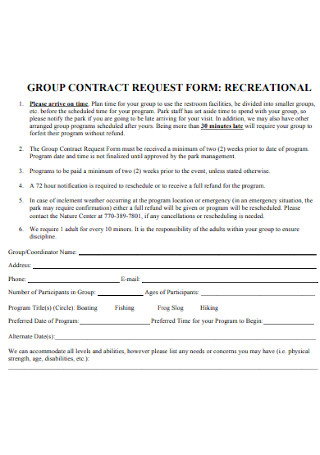
Group Contract Request Form
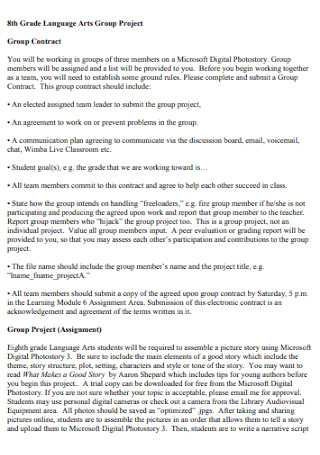
Arts Group Project Contract
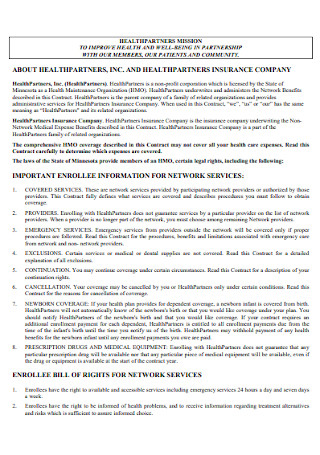
Group Membership Contract
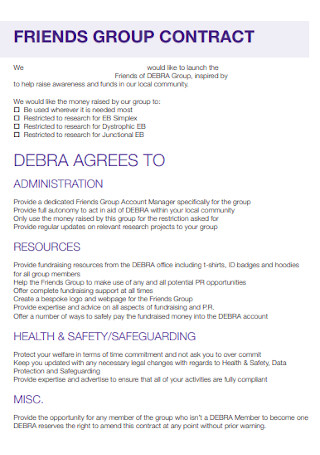
Friends Group Contract
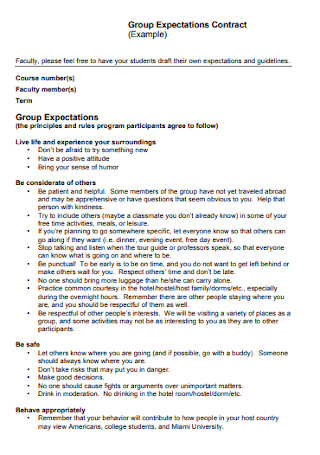
Group Expectations Contract
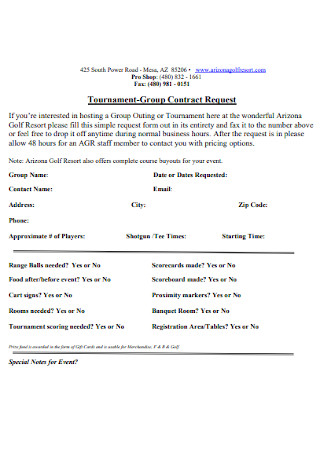
Group Tournament Contract
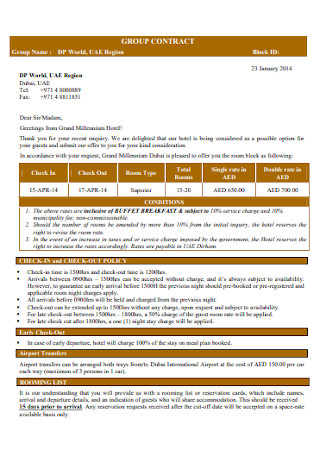
Standard Group Contract Template
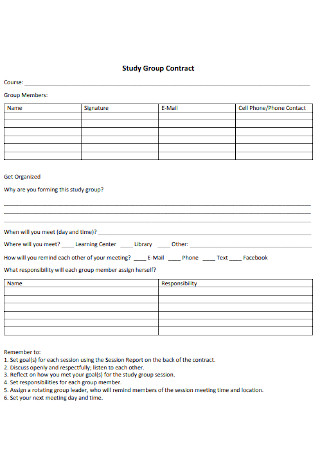
Study Group Contract

Hotel Group Contract
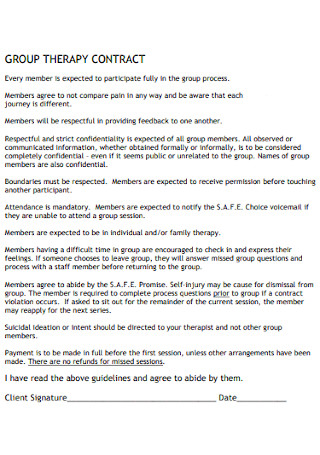
Group Theraphy Contract
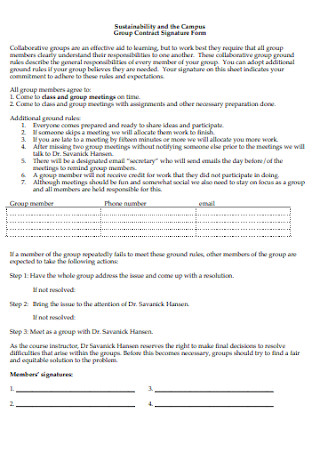
Group Contract Signature Form
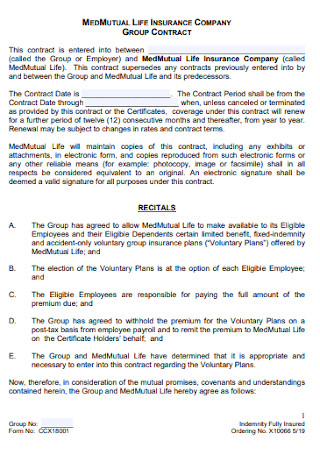
Company Group Contract
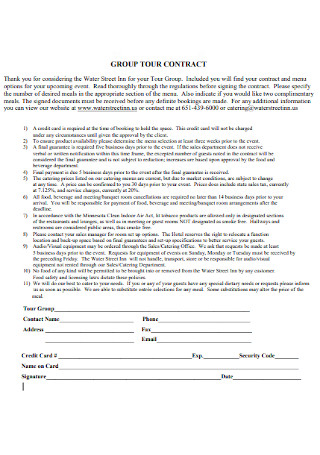
Group Tour Contract
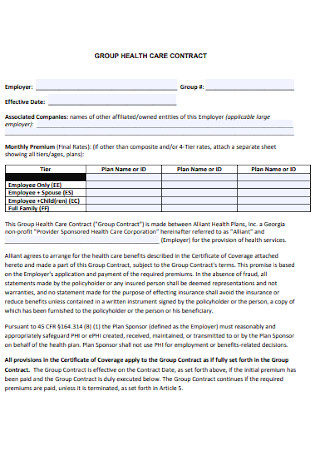
Group Health Care Contract
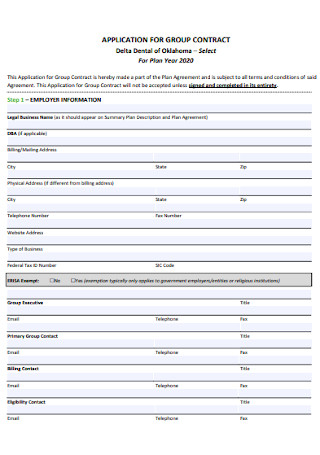
Application for Group Contract Template
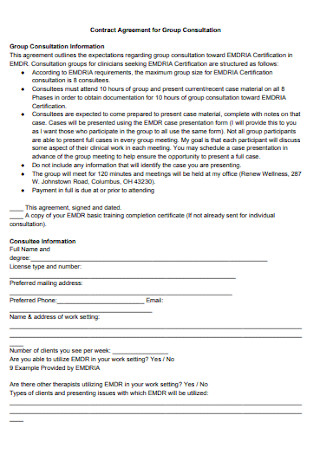
Contract Agreement for Group Consultation
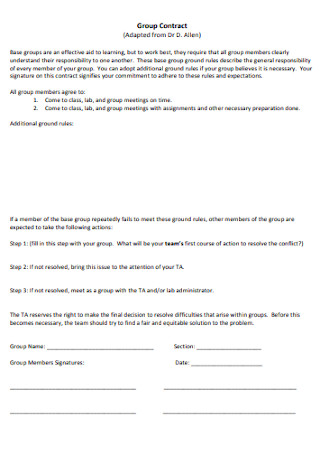
Simple Group Contract Template
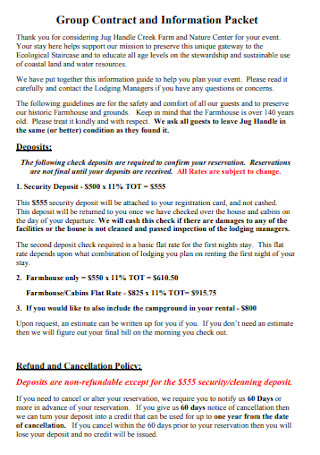
Group Contract and Information Packet
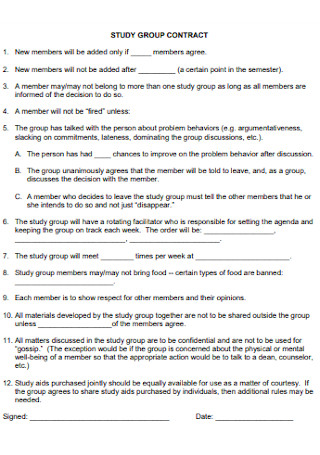
Sample Study Group Contract
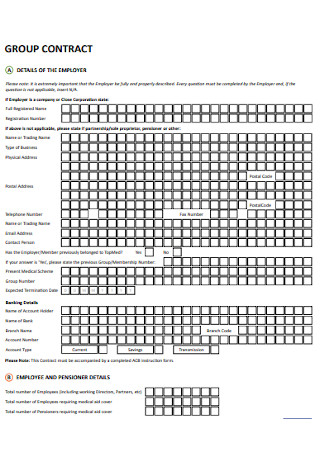
Employer Group Contract Template
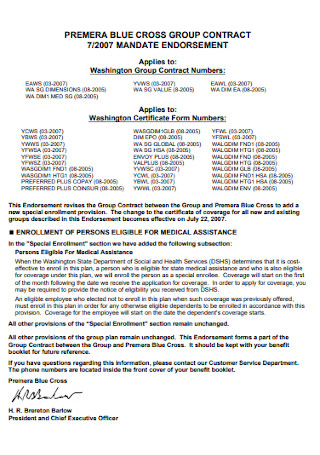
Blue Cross Group Contract
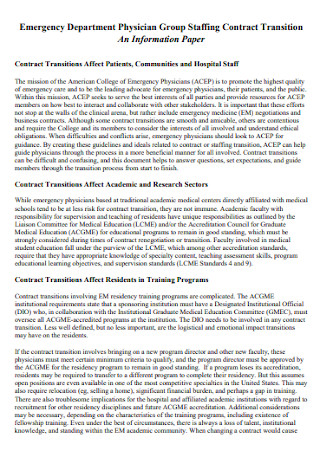
Group Staffing Contract
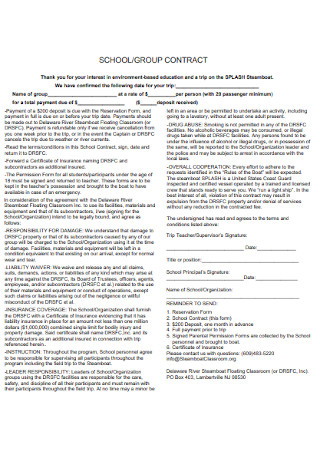
School Group Contract
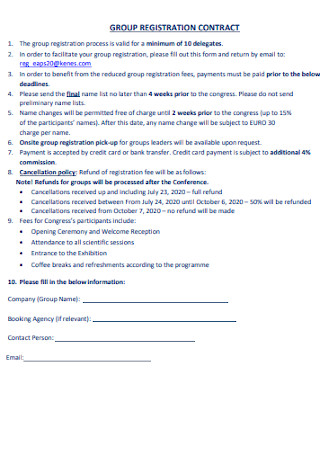
Group Registration Contract
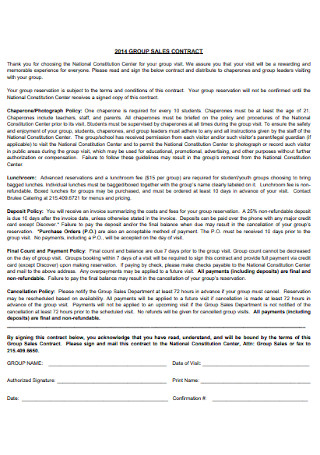
Group Sales Contract Template
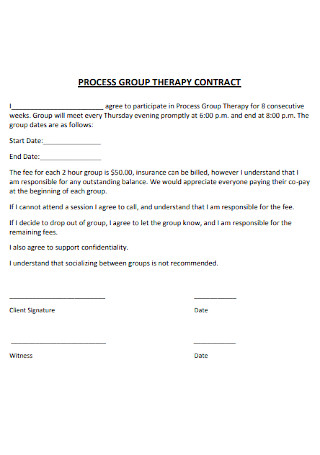
Process Group Therapy Contract
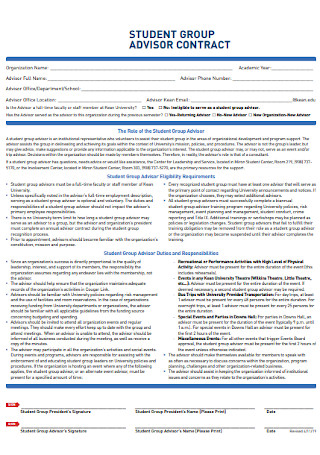
Student Group Advisor Contract
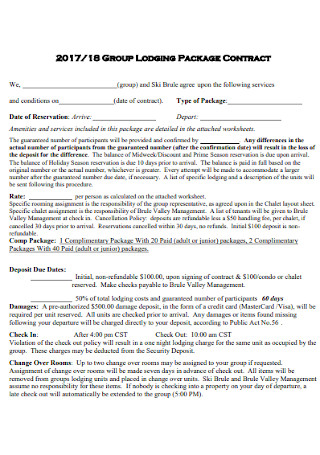
Group Lodging Package Contract
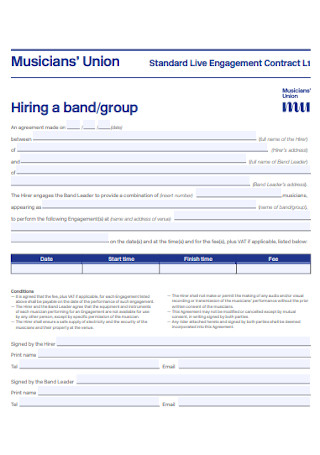
Band Group Contract
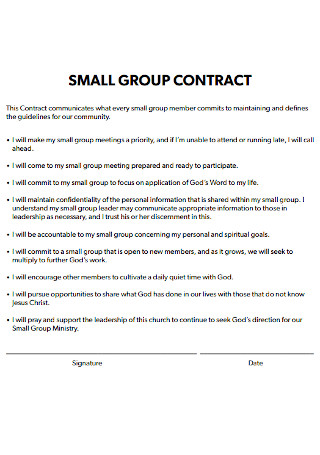
Small Group Contract
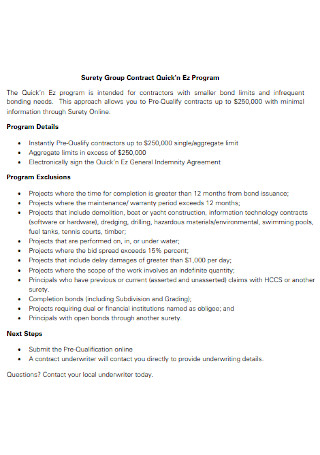
Group Surety Contract
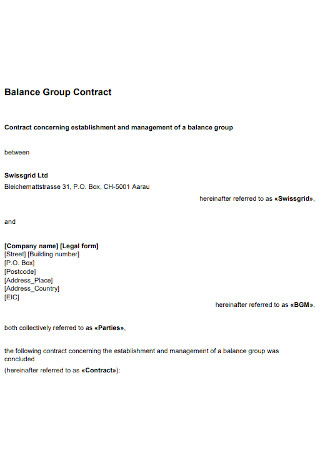
Balance Group Contract

Group Psychological Contract

Formal Group Contract Template
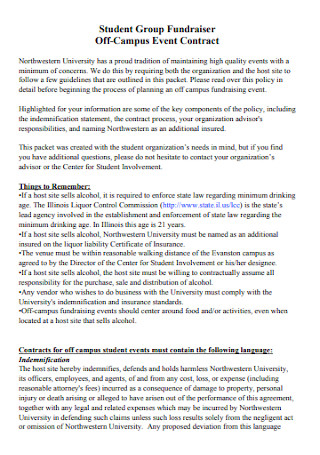
Camps Students Group Contract
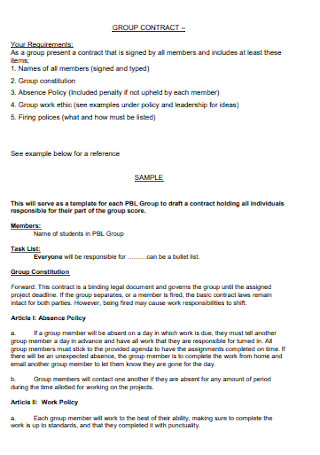
Group Contract Format
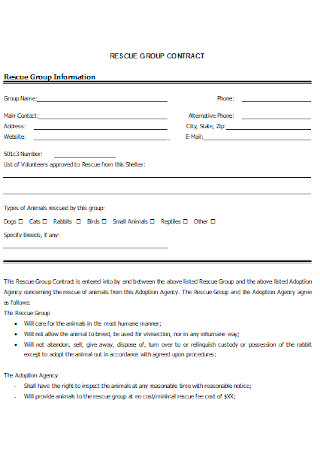
Rescue Group Contract
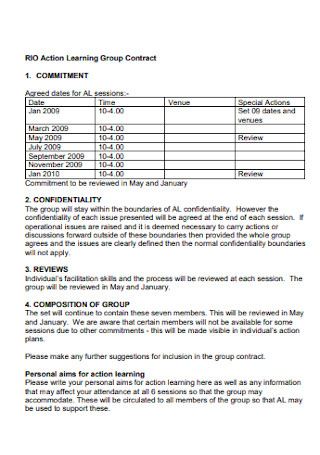
Action Learning Group Contract
Step 1: set the roles of each team member, step 2: make a timeline, step 3: schedule meetings regularly, step 4: create a plan for communication, share this post on your network, file formats, word templates, google docs templates, excel templates, powerpoint templates, google sheets templates, google slides templates, pdf templates, publisher templates, psd templates, indesign templates, illustrator templates, pages templates, keynote templates, numbers templates, outlook templates, you may also like these articles, 14+ sample personal training contract in pdf | ms word.

For newbie gym goers, going to the gym or attending a fitness class may seem quite intimidating and awkward at first. You are unsure if you are using the…
15+ SAMPLE Musician Contract in PDF | MS Word
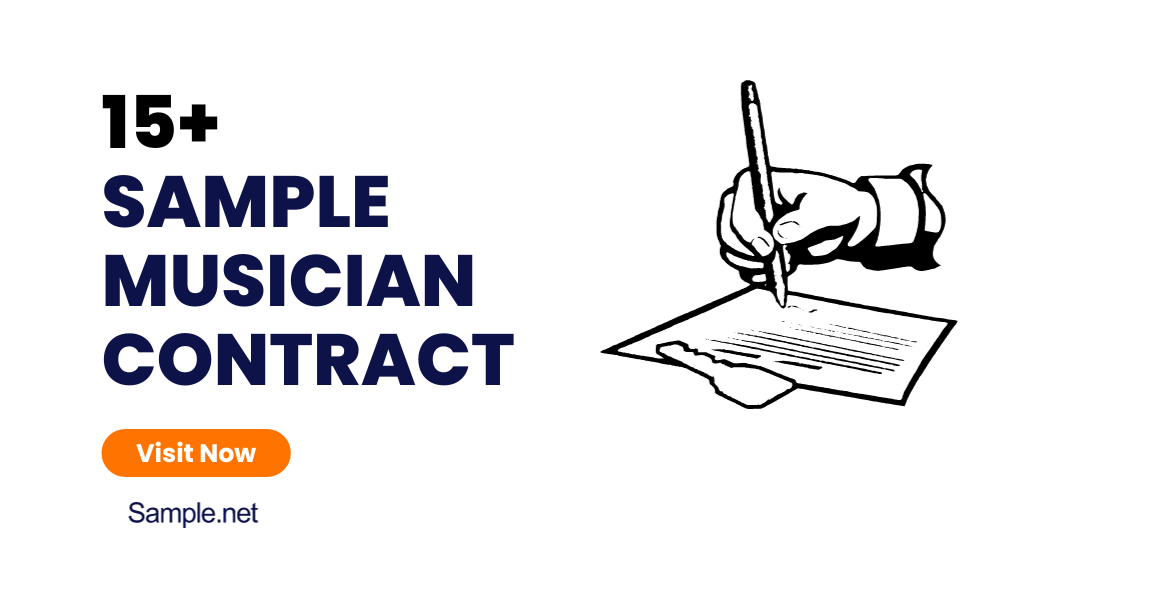
In the last two decades, being a working musician has immensely changed as the artists in today’s generation must be more responsible than ever for the trajectory of their…
browse by categories
- Questionnaire
- Description
- Reconciliation
- Certificate
- Spreadsheet
Information
- privacy policy
- Terms & Conditions
Making Group Contracts
Working in groups can be both rewarding and challenging. When students write down and agree upon ground rules, expectations, roles, and responsibilities in the form of a contract or project charter, they can help keep one another on track and accountable. This teaching tip discusses four steps instructors can take to support students in creating group contracts.
Explain what a group contract is and why you are asking groups to develop one
What is a group contract.
A group contract is a document that a group creates to formalize the expectations of group members. A group contract should contain the following:
Group members’ names and contact information
Expectations (ground rules) regarding preparation for and attendance at group meetings, frequency and duration of meetings, and communication. The contract should focus on behaviours that will be expected of all group members and should only include those behaviours that are crucial to the group's effectiveness. Groups could aim for five-seven ground rules.
Assignment of specific tasks, roles, and responsibilities along with due dates. The group can itemize the tasks to be completed for the project and provide a space for each group member to sign up for that task.
Outline of the specific process for dealing with unmet expectations or other problems that might arise.
An agreed-upon method for peer feedback during the project so that problems can be addressed before the project ends.
A place for each group member to sign, indicating their agreement to the contract.
A place for group members to sign once the project is completed to indicate whether or not they agree that all group members contributed as expected and, therefore, earn the group grade.
Why use a group contract?
Explicitly discussing the benefits of group contracts will help establish good faith in the process among your students. So what are the benefits?
The benefits of small-group learning are well known — group work is associated with deeper learning, strong information retention, and the acquisition of valuable communication and teamwork skills (Oakley, Felder, Brent, & Elhaji, 2004).
On top of this, because group contracts allow students to take an active role in setting the tone for group interaction, group contracts can help "motivate ownership of learning" (Hesterman, 2016, p. 5). Writing group contracts can also:
Help students identify expectations of one another, communicate those expectations, and practice articulating their expectations.
Facilitate student reflection on their past experiences and communications practices, important transferable skills for future work and personal relationships.
Increase a sense of community in the class as students get to know and work with one another.
See 7 Reasons to Use Contracts in a PBL Classroom + Tips for Use for more information.
Identify intended learning outcomes
Reflecting on the particular pedagogical benefits you would like to see your students reap through group work can help you establish guidelines for the creation of group contracts. For example, Oakley, Felder, Brent, and Elhaji (2004) advocate for group work where groups assign roles that rotate regularly among members in order to provide each student the opportunity to practice important teamwork skills.
Some questions to consider before asking students to draft their contracts include:
What kind of skills do you imagine students practice within their groups? What roles might students take on to practice them?
How do you want students to divide the workload? If students choose to "divide and conquer" the work, will they achieve your intended learning outcomes?
Which guidelines, course expectations, or rules are firm and need to be in place before students draft their contracts, and which concepts, issues, and decisions would they benefit from working through as they discuss and create their contracts?
Provide resources to guide students through the process
Give students resources for creating a first draft of their group contract, or draw on existing resources and templates to create a guide for your students to follow. These can include:
Creating the contract
Working Effectively in Groups [PDF] from the Waterloo Student Success Office
Group contract templates
Team Contract Template from the Eberly Centre, Carnegie Mellon University
Online Group Work Contract Template from the Taylor Institute Teaching Community, the University of Calgary
Group contracts samples
Sample Group Contract [PDF] from the Teaching, Learning, and Technology Centre, UC Irvine
University of Waterloo Sample Group Contract [DOC] (also available below as an Appendix )
Conflict resolution resources
Group Work: Dealing with Conflicts [PDF] from the Learning and Teaching Office, Ryerson University
Resolving Conflict from the UBC Learning Commons
8 Steps for Conflict Resolution , for the Office of Talent Management, University of Wisconsin-Madison
Give students time in class to write the contract
By dedicating class time to the creation of a group contract, you let students know that it is an important activity that merits time and attention. First, give students time to individually reflect on and write down what they like and do not like about working in a group. Prompt students to consider their past experiences working in a group. What went well? What didn’t go well? What contributed to the group’s success or problems? What are their strengths when it comes to working collaboratively, and what is something they would like to improve? Next, ask students to sit with their group members and share what they’ve written as a springboard to their discussion of ground rules and roles.
Hesterman, S. (2016). The digital handshake: A group contract for authentic elearning in higher education. Journal of University Teaching and Learning Practice, 13 (3), 1-24.
Oakley, B., Felder, R. M., Brent, R., & Elhaji, I. (2004). Turning student groups into effective teams. Journal of Student Centered Learning, 2 (1), 9-34.
CTE teaching tips
Teamwork Skills: Being an Effective Group Member
Meeting Strategies for Group Work
Effective Communication: Barriers and Strategies
Appendix: University of Waterloo Sample Group Contract
Group behaviours expected of each member:.
All group members will be punctual. Meetings will start five minutes after the agreed start time and everyone should be there and ready by then.
We should attend all meetings unless there are unavoidable events such as illnesses.
All group members will remain in the meeting until (a) all tasks for that meeting are completed, or (b) there is unanimous adjournment.
Breaks will be decided by unanimous consent, and breaks will not exceed twenty minutes in length
All group members will come to the meetings prepared by
(a) reading the assigned material (as much as possible), and
(b) coming with ideas pertaining to the tasks and decisions to be made.
Tasks that group members agree to undertake should be completed to the agreed deadline. If it looks as though there will be a problem meeting a deadline, the person concerned should seek help from other members of the team in time to avoid a delay.
There will be an assimilation period at the end of the session to evaluate group mechanics and ensure that all tasks have been completed adequately.
Each group member has the right to point out whether any of these rules are being broken.
Behavioural
The group will actively seek a consensus of opinion based on the opinions of every member.
Each member will take turns listening as well as talking, and active listening will be a strategy for all group discussions.
Sexist and racist remarks are not acceptable.
Aggressive and dominating behaviour is not acceptable.
Roles will be assigned prior to a meeting or, if this is not possible, at the beginning of a meeting. Roles will rotate each meeting.
The leader will, at the beginning of a meeting, set sub-goals. These sub-goals will be presented to the group for a consensus of approval. The leader is also responsible for the presentation of the group material to the rest of the class.
The secretary is responsible for taking in-session notes and preparing presentation materials from these notes.
The timekeeper is responsible for keeping track of the time allotted to each discussion, and keeping the group aware of time remaining. The leader is responsible for deciding what to do when time is running out during a discussion.
The devil's advocate will keep his/her mind open to problems, possibilities, and divergent or opposing ideas.
Methods for resolving an impasse:
Step 1: The group members will isolate areas of disagreement, and the group will come to a consensus. If no consensus is reached, proceed to Step 2.
Step 2: The leader will decide the relevance or importance of the dispute and may postpone the conflict if its relevance or importance is deemed questionable or minimal.
Step 3: The leader will decide the amount of time for discussion or arbitration before calling a vote.
Step 4: The leader will call a vote. If the vote is a stalemate, the leader makes a final decision.
Eberly Center
Teaching excellence & educational innovation, sample group project tools.
Here are different group project tools you might consider adopting or adapting for use in your own courses. You can find others on the Web.
Read about best practices for designing and assessing group projects to learn more about how to use these tools. Or come talk to us at the Eberly Center for guidance on how and when to use any of these tools or help creating your own.
Group resumes and skills inventories
- IS Skills Inventory
- Sample Group Resume
Team contracts
- Sample team contract
- Team contract template
- Group work roles
Self-assessments
- Sample Group Work Self Evaluation
- Sample Self Evaluation Form
Peer assessments
- Peer Evaluation Form for Group Work
- Peer Work Group Evaluation Form
- Sample Numerical Peer Evaluation (Self Excluded)
- Sample Numerical Peer Evaluation (Self Included)
Group assessments
- Sample Group Process Assessment
- Sample Group Process Evaluation Form
- Sample Qualitative Group Evaluation
This site supplements our 1-on-1 teaching consultations. CONTACT US to talk with an Eberly colleague in person!

Want to create or adapt books like this? Learn more about how Pressbooks supports open publishing practices.
11.1: Team Roles and Group Contracts
Teamwork has the potential to capitalize on the diverse strengths of team members while offsetting individual weaknesses, but teamwork scenarios also have the potential for significant interpersonal conflict. In this section we examine productive team roles and counterproductive team member habits, and the importance of contracts in teamwork scenarios. We also offer a model of constructive criticism designed to mitigate the risk that individuals find critiques to be objectionable.
11.1.1 Team Roles and Counter-Productive Habits
11.1.2 group contracts, 11.1.3 constructive criticism.
No matter how many people are in a group, there are certain tasks that will always have to get done. These tasks ensure that work will happen in an organized, productive way. The most reliable way of making sure that these tasks are completed is to make different members responsible for them. To put it another way, these responsibilities are best met by taking on specific roles on the team.
At this stage of post-secondary education, most students have a sense of which skill set is their strongest. Keep in mind, however, that school and work are not just about performance. They are also about growth. If you do not get your preferred role, don’t hesitate to try a role that is out of your comfort zone. You may find that you rise to the challenge and discover a whole new competency that you didn’t know you had.
Table 11.1.1a: Productive Team Roles
In group work situations where there are fewer members, each person might have to take on a few roles. When this happens, make sure that merged roles are closely aligned (ex. Scheduler+Meeting Chair; File Coordinator+Editor). In situations where there are more members than roles, look to see where multiple perspectives would be the most beneficial. In those cases, more than one person can take on a role (ex. Designated Critic; Visual Designer).
To ensure that you are part of the communication solution rather than part of the communication problem, make sure that you do not fall into any of the counter-productive habits described below.
Table 11.1.1b: Counter-Productive Habits
(adapted from Benne & Sheats, 1948; McLean, 2005)
When group members are assigning Productive Roles, it is important to be clear and specific. This way, everyone knows what is expected of them. If communication isn’t ideal, however, and team members are falling into the Counter-Productive Habits, avoid blaming or name-calling. Instead of accusing a team member of “always being a Dominator” or “being a Slacker,” concentrate on identifying a behaviour and describing the effect it has on the team dynamic or project outcomes. Remember to be empathetic. If you think that someone is being overly-dominant or too light-hearted, they might think that they are contributing strong leadership or comic relief. In these cases, try talking it out to see if there is a compromise within reach.
Group contracts are another tool that can be used to clarify and to structure expectations at the start of a team effort. The process of creating a contract is a great way to build accountability and commitment that will last through till the time that the project is done. Not only does it solve some problems before they arise, but it can build in an agreed-upon method for resolving miscommunications and disputes when they inevitably arise.
Table 11.1.2: Parts of a Group Contract
The word “criticism” often has a negative association. Sometimes people use this word to describe what feels like an unfair complaint or attack. However, the real meaning of the word much more positive. When authentic criticism happens, it means that someone is taking the time to give serious attention to your work. Even better than criticism is constructive criticism . This term refers to feedback that makes a project stronger. Constructive criticism should identify what is going right in a project as well as those areas where the project can be improved. Even well-intentioned criticism can risk hurting people’s feelings, so follow these suggestions to make sure that the group stays on a positive path.
Tips for constructive criticism:
- structure your feedback in a GLOW-GROW-GLOW pattern. Begin your message with a sincere, positive observation. This is a GLOW statement. Then, identify an area that would benefit from more effort or attention. This is a GROW statement. To make sure that you end on a positive note, finish with one more GLOW statement.
- stay specific in your feedback. Even if you can’t provide a detailed solution, be sure to give direct examples of where you think the work is problematic or could be improved. There are few things that are more frustrating than someone who complains about a situation without telling you why they’re dissatisfied.
- be sincere in your feedback. Make sure you mean what you say. If the GLOW statement is superficial or sounds phony, you and your criticism will lose all credibility. If the GROW statement is superficial or sounds phony, team members will think that you didn’t put in enough effort.
- ask questions and make suggestions. Be clear that you are interested in what the other person has created and that you respect the effort that they put in. If you aren’t sure why something was done the way it was, ask them to clarify what their intention was. If you think you see a way to fix it, share that. Just be careful not to assume that your way is the only way. If another group member has taken on responsibility for a part of a project, that is their work and they are entitled to do it to the best of their ability.
Finally, remember that your opinion is just that: your opinion. If other group members don’t agree with your criticism, it could be that it is not valid. As long as you keep the conversation respectful, these kinds of discussions can lead to trust and progress, even when everyone doesn’t agree on every detail.
Key Takeaway

2. Consider past group work you’ve done in high school or even recently in college and identify a particular problem you had to overcome to guarantee the group’s success. Did the group as a whole contribute to its solution, or did an individual member have to step up and pull through? Describe your problem-solving procedure. Was it successful immediately or did it require fine-tuning along the way?
3. Identify a problem that can only be solved with teamwork in the profession you’ll enter into upon graduating. Describe the problem-solving process using the procedure explained in Chapter 1.
4. Think of a leader you admire and respect, someone who had or has authority of you. How did they become a leader? By appointment, democratic selection, or emergence? How would you characterize their leadership style? Are they autocratic or laissez-faire? Are they like a technician, conductor, or a coach? Do they use the carrot or the stick to get action from the people they have authority over?
5. Roleplay with a classmate the following scenario: You’re a mid-level manager and are concerned about an employee arriving 15-20 minutes late every day, although sometimes it’s around 30-40 minutes. The employee leaves at the same time as everyone else at the end of the day, so that missing work time isn’t made up. What you don’t know (but will find out from talking with the employee) is that they must drop their child off at elementary school shortly before 8am, battle gridlock highway traffic on the way to work (hence the lateness), then leave at a certain time to pick their child up from after-school daycare (hence not being able to stay later). What you do know is that talking with the employee in private is the right way to handle this and that the executive director above you considers it your responsibility to have everyone arriving on time and being paid for their hours as stipulated in their contracts; the director isn’t afraid of firing someone for such a breach of contract, so you have the authority to threaten the employee with that consequence if you feel that it’s necessary. The fact that this employee is being paid for working fewer hours than stipulated in the contract will be a strike against you unless you either get them back on track or fire them if you can’t work their full hours. Be creative in discussing an amicable solution with the employee that satisfies everyone involved. Switch between being both the manager and the employee in your roleplay.
Benne, K. D., & Sheats, P. (1948). Functional roles of group members. Journal of Social Issues , 4 (2), 41–49. https://www.metanoia.ac.uk/media/1514/bradford-lp-functionalrolesofgroupmembers.pdf
McLean, S. (2005). The basics of interpersonal communication . Allyn & Bacon.
11.1: Team Roles and Group Contracts Copyright © 2022 by John Corr; Grant Coleman; Betti Sheldrick; and Scott Bunyan is licensed under a Creative Commons Attribution 4.0 International License , except where otherwise noted.
Share This Book

IMAGES
VIDEO
COMMENTS
A group contract is a document that a group creates to formalize the expectations of group members. A group contract should contain the following: Group members' names and contact information. Expectations (ground rules) regarding preparation for and attendance at group meetings, frequency and duration of meetings, and communication.
Utilize a team contract template when forming a new collaborative group to establish clear expectations, roles, and guidelines for effective teamwork. This template is essential at the outset of a project, academic assignment, or any team-based endeavor to ensure a shared understanding among team members. This Group Contract (the "Contract") is ...
Writing a Group Contract. A group contract is a document you create with your group that formalizes how members will work together to complete a project. When students write down and agree upon the ground rules, expectations, roles, and responsibilities as a group contract, they can help keep one another on track and accountable for their work ...
What is a Group Assignment Contract? A group assignment contract simply called a group agreement or group contract is a written document that a particular group makes to officialize the expectations of group members.The contract can increase productivity and a good working experience for every member since they already know their roles and the tasks they need to do and accomplish and at the ...
A group contract is a shared document that the group members write together and sign. It's essentially a mutual agreement made by all group members to set the norms for student collaboration throughout the project. This is a living document that can be referred to and used as a tool whenever necessary to help students hold each other accountable.
Below is a sample of one way to form collaborative work groups. In this example, group members are given both some guidelines by the instructor and permitted to write some of their own. A group contract can be written solely by the instructor, by the group members, or both. You may choose to have everyone use the same contract, let individual ...
Contract Assignment Agreement. Last revision 12/31/2023. Formats Word and PDF. Size 2 to 3 pages. 4.8 - 105 votes. Fill out the template. This Contract Assignment Agreement document is used to transfer rights and responsibilities under an original contract from one Party, known as the Assignor, to another, known as the Assignee. The Assignor ...
A contract assignment agreement is a binding document between two parties that sets out the terms of the assignment of a contract. It is typically used when one party wishes to assign their rights, responsibilities, obligations, and benefits under a contract to another party. Use this contract assignment agreement template to create a binding ...
A: The main differences between a group contract in the UK, USA, and EU are mainly related to the laws and regulations governing them. In the UK, for example, Group Contracts are generally governed by the Contracts Act of 1990 which provides guidance on how to form a legally binding agreement between multiple parties.
Trademark Assignment Agreement. This document allows you to transfer the property rights in a mark or multiple marks. 27.3K downloads. An assignment agreement is a crucial legal document used to consolidate the transfer of rights, titles, and interests, particularly in the realm of intellectual property. Whether it's patent rights, a trademark ...
How To Use This AI Generator: Click "Use Generator" to create a project instantly in your workspace. Click "Save Generator" to create a reusable template for you and your team. Customize your project, make it your own, and get work done! Unlock the benefits of seamless group assignment planning with the Group Assignment Working ...
Reading Time: 4 minutes By Rachel Schultz, B.A., B.Ed., M.Ed, OCT, TESL Professor, School of Interdisciplinary Studies. This teaching tip describes the value of team contracts for group work the Group Dynamics course, and provides a sample team contract for download along with tips for facilitating team contracts for student groups.
Group contracts are a formalized document (digital or paper) of norms and agreements students fill out at the beginning of the project. This document is completed together by all group members and outlines how they will work together as how well as how they will successfully complete the end product (s) of the project.
Assignment Agreement Template. Use our assignment agreement to transfer contractual obligations. An assignment agreement is a legal document that transfers rights, responsibilities, and benefits from one party (the "assignor") to another (the "assignee"). You can use it to reassign debt, real estate, intellectual property, leases ...
However, with a well-formulated team contract, such obstacles can usually be avoided. Team Contract Assignment Your team contract template is divided into three major sections: 1. Establishing team procedures 2 . Reviewing team expectations 3 . Assignment of tasks and deadlines
The leader's role is to lead the discussions, motivate his team members, encourage brainstorming, guide conversations, and address his group's questions. (2) Organizer. The organizer's role is to schedule meetings, check if the project is on track, and take note of everything. (3) Editor. The editor edits the final work and collects the ...
Assignment of specific tasks, roles, and responsibilities along with due dates. ... Online Group Work Contract Template from the Taylor Institute Teaching Community, the University of Calgary. Group contracts samples. Sample Group Contract [PDF] from the Teaching, Learning, and Technology Centre, UC Irvine.
What is the team's grade expectation on this assignment? Is there consensus? Please ask each other: "Is each member committed to putting in the work to achieve this grade? If not, how will the team resolve this? " Please circle/highlight the grade that you group is targeting: 50% to 60% . 60% to 70% . 70% to 80% . 80% to 90% . 90% to 100%
Sample group project tools. Here are different group project tools you might consider adopting or adapting for use in your own courses. You can find others on the Web. Read about best practices for designing and assessing group projects to learn more about how to use these tools. Or come talk to us at the Eberly Center for guidance on how and ...
Assignment of specific tasks, roles, and responsibilities along with due dates.The group can itemize the tasks to be completed for the project and provide a space for each group member to sign up for that task. ... Group contract templates. Team Contract Template from the Eberly Centre, Carnegie Mellon University; Team Charter from the ...
Table 11.1.1a: Productive Team Roles. Scheduler. Arranges meeting time, sets communication channel (ex. face-to-face, Zoom, MS Teams), sends out invitations and reminders. Meeting Chair. Sets meeting agenda, manages participation and time during meetings. Recorder. Notes down ideas, developments, and next steps. Designated Critic.
Each group member has to sign at the end of the complete group contract. The completed group contract is due at the end of module One. Please upload the signed group contract to File Exchange under Blackboard Groups menu. 1. Project Name and Due Date Assessment Plan- May 26, 2023 Action Plan- June 9, 2023 Communications Plan- June 23, 2023 ...
About this template. Tackle your group assignments like a pro with our comprehensive Student Group Assignment template. With dedicated sections for outlining team member responsibilities, housing important links, and listing to-dos, this template serves as your central hub for effective collaboration. Record your meeting notes to keep everyone ...